
Discover the many benefits of raising backyard chickens. Dive into guides, tips, and resources for every stage, from chicks to layers. Start your poultry journey at NowHatching.com!

Imagine the joy of eating fresh free-range eggs from your own backyard chickens.

Backyard Chicken FAQ (Frequently Asked Questions)
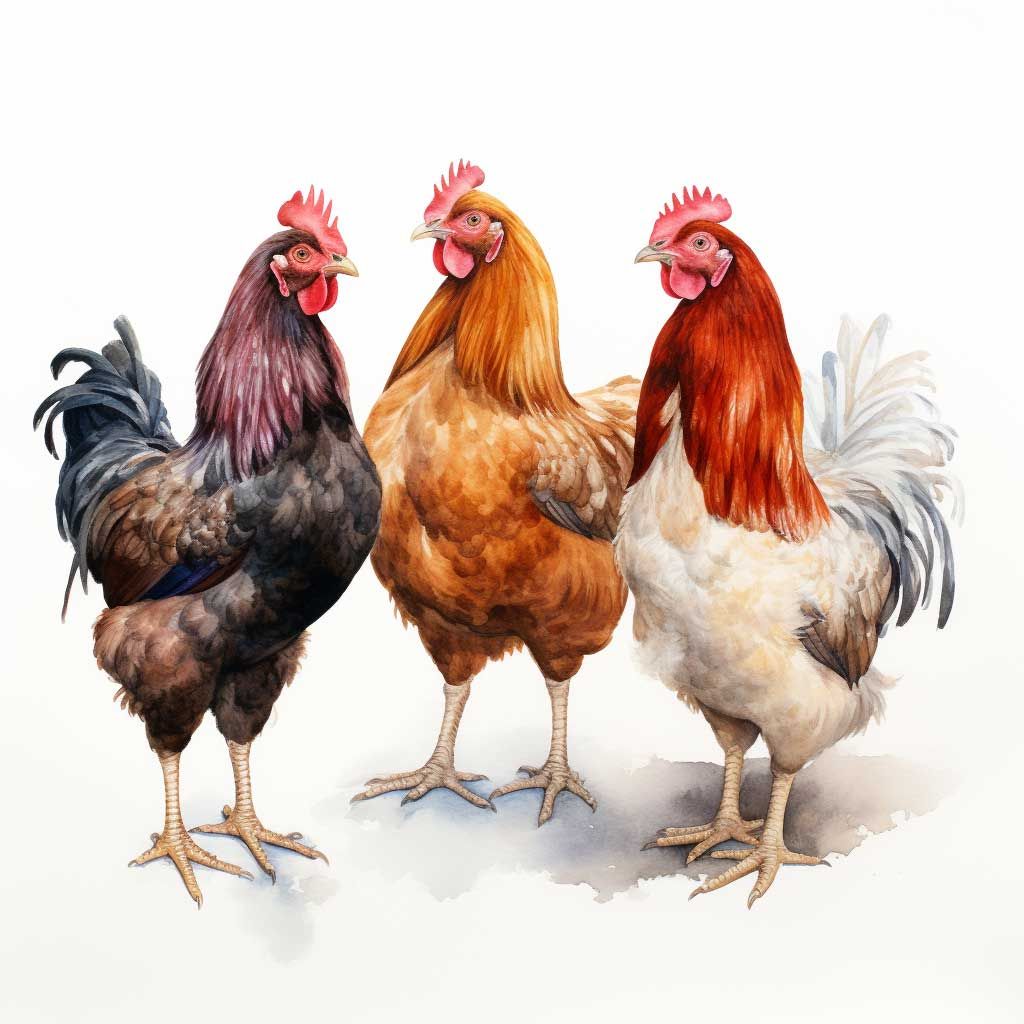
Outline of Now Hatching
Introduction
– Brief history of domesticated chickens
– The growing trend of backyard chickens
– Overview of Backyard Chicken benefits
– The Sustainability Lifestyle
Deciding to Raise Chickens
– Evaluating your reasons: Eggs, meat, pets, or all three?
– Commitment involved: Time, money, and resources
– Long-term considerations: Chicken lifespan, ongoing costs
Legalities and Ethical Considerations
– Checking local regulations and zoning
– The ethics of raising poultry: Welfare standards
– Being a good poultry-keeping neighbor
Choosing the Right Breed for You
– Overview of popular chicken breeds
– Temperament, size, and purpose (Eggs, meat, ornamental)
– Climate considerations: Choosing breeds suited to your region
Housing Your Flock
– Basic needs: Protection, space, ventilation, and insulation
– Designing and building a great chicken coop
– Nesting boxes, roosts, and bedding
– Predator protection strategies
Nutrition and Feeding
– Commercial feeds vs. homemade diets
– Supplemental feeding: Grit, calcium, and treats
– Understanding feeding through various life stages
Health and Wellness
– Common chicken illnesses and diseases
– Prevention and natural remedies
Daily and Seasonal Care
– Routine tasks: Feeding, watering, egg collection
– Seasonal considerations: Heat, cold, molting
– Dealing with pests and parasites
The Lifecycle of a Chicken
– Raising chicks: Brooders, feeding, and early care
– The laying hen: Egg production and potential issues
– Roosters: Roles, challenges, and whether you need one
– End of life considerations: Aging hens, culling, and ethical considerations
Expanding Your Flock
– Breeding chickens: Basics of genetics and selection
– Incubating eggs: Equipment and best practices
– Introducing new chickens to an existing flock
Harvesting and Using Eggs
– Collecting and storing eggs
– Understanding egg anatomy and potential abnormalities
– Understanding different egg colors
– Recipes and uses for fresh eggs
If Meat Birds Are Your Goal
– Differences between layer breeds and meat breeds
– Raising meat chickens: From chick to processing
– Ethical and humane considerations in processing
– Preserving and cooking your harvest
Beyond the Basics
– Advanced poultry keeping: Rare breeds, showing, and more
– Selling eggs and chicken products: Local regulations, pricing, marketing
– Engaging with the wider poultry community
Challenges and Troubleshooting
– Addressing behavioral issues: Pecking, broodiness, aggression
– Predators and how to deter them
– Handling egg production issues
Fun and Fulfillment with Chickens
– Chickens as pets and companions
– Activities and games for chickens
– Sharing the joy: Educating others about backyard chickens
– Planning an Epic Easter Egg Hunt
Conclusion
– Reflecting on the joys and challenges of poultry keeping
– The broader benefits of a self-sustaining lifestyle
– Encouragement for continued learning and engagement with the poultry community
Extras
– Glossary of poultry-related terms
– Resource list: Books, websites, and communities
– Supplier list: Equipment, feed, and health supplies
– Breed profile directory

Backyard Chickens: A Journey from Ancient Coops to Modern Yards
When one thinks of a chicken, it’s often accompanied by the imagery of vast poultry farms or perhaps the sizzling aroma of a delicious dish in preparation. But the humble chicken has a history as rich as its utility, and in recent years, the trend of raising chickens in backyards has seen a noticeable surge. As we unpack this journey, we’ll see that the reasons for this are manifold, from sustainability concerns to the simple joys of companionship.
A Brief History of Domesticated Chickens
Our tale begins several thousand years ago in Southeast Asia, where the Red Junglefowl, the wild ancestor of domesticated chickens, was first tamed. Initial domestication was likely for the purpose of cockfighting rather than for meat or eggs. As civilizations grew, so did the significance of the chicken. By the time of Ancient Egypt, chickens had become a part of agricultural life, with their roles pivoting more towards providing meat and eggs.
Fast forward to the age of exploration, chickens were among the cargo on ships, ensuring fresh produce on long voyages. This led to their globalization, as explorers introduced them to different parts of the world. Through selective breeding over centuries, the modern domesticated chicken came into existence, primed for maximum egg laying and meat production.
The Modern Renaissance of Backyard Chickens
Though chickens had been a staple in rural areas for millennia, the urbanization of the 20th century saw a decline in personal poultry rearing. The conveniences of city life meant that many sourced their poultry products from stores, detached from the process of rearing the animals.
However, the 21st century ushered in a surprising twist: the revival of backyard chicken keeping, even in urban settings. This renaissance can be attributed to various factors:
– Sustainability Movement: With growing awareness of environmental issues, many urban dwellers sought to reduce their carbon footprint. Raising backyard chickens offered an avenue for organic living and reducing dependency on commercial poultry, notorious for its carbon emissions and often questionable farming practices.
– Health and Wholesomeness: The organic food trend and a growing mistrust of commercial poultry due to recurring health scandals (like the use of antibiotics and growth hormones) pushed people to control their food source directly. What can be more organic than eggs from your backyard?
– Community and Learning: As more households ventured into poultry-keeping, communities both online and offline sprouted. The internet became a goldmine of resources for beginners. This collective learning and sharing experience strengthened the movement.
Overview of Benefits: What’s Not to Like?
- Sustainability: Chickens are fantastic for the environment. They’re natural composters, turning kitchen scraps into nutrient-rich manure. This not only reduces waste but also provides excellent fertilizer for gardens. Moreover, by reducing the need for commercially farmed poultry, backyard chicken enthusiasts can significantly lower their carbon footprint. It’s eco-friendly living, one cluck at a time!
- Food Source: There’s an incomparable satisfaction in harvesting your own eggs. They’re fresher, often larger, and devoid of the commercial processes that might diminish nutritional value. For those inclined, the option to use chickens for meat is also there, ensuring you know exactly where your food comes from.
- Companionship: Chickens, contrary to some stereotypes, have personalities. Each bird is unique, and owners often find joy in their quirks, behaviors, and even bonds that form. They can offer therapeutic benefits akin to other pets. Children, in particular, benefit immensely, developing empathy, responsibility, and a connection to nature.
In conclusion, the world of backyard chickens is a tapestry of history, modern trends, and tangible benefits. From the ancient jungles of Asia to the bustling cities of today, chickens have been our companions, providing sustenance and joy. As the trend grows, it’s clear that the backyard chicken isn’t just a fad but a reflection of evolving human values and a return to sustainable roots.

Deciding to Raise Backyard Chickens: A Comprehensive Guide
From the urban homesteads of Brooklyn to the spacious backyards of suburban Texas, chickens are making a prominent re-entry into household landscapes. As with any decision, diving into the world of backyard chicken rearing requires careful consideration. If you’re on the fence, let’s embark on a journey to evaluate your reasons, understand the commitment, and ponder long-term considerations.
Evaluating Your Reasons: What’s Your Cluck-Call?
- Eggs: The allure of fresh eggs, right from your backyard, is irresistible for many. Store-bought varieties, even the organic ones, can’t match the flavor of a home-raised egg. Additionally, knowing that your breakfast came from a happy, well-cared-for hen adds a sprinkle of satisfaction to your omelette.
- Meat: While this might not be for the faint-hearted, some people raise chickens for meat. This assures them of the quality, and they have the peace of mind knowing that the chicken was raised ethically, without the use of hormones or antibiotics.
- Pets and Companionship: Chickens are not mere egg or meat machines. They’re creatures with distinct personalities. Some breeds, like the Silkie or the Sussex, are known for their friendly nature and can be wonderful pets. Children can especially benefit from such companions, learning empathy, responsibility, and the circle of life.
- Multipurpose: Many households find a balance, raising chickens both for eggs and companionship. It’s essential to understand your primary motive, as it will guide your choices, from the breed to the kind of care they’ll require.
Commitment Involved: More than Just a Wing and a Prayer
- Time: Chickens, though less demanding than some pets, require regular care. This includes feeding, ensuring a continuous supply of clean water, cleaning their living space, and safeguarding them from predators. Moreover, if you’re raising them for eggs, there’s the added task of daily egg collection.
- Money: The initial setup can be a significant investment. This involves constructing or buying a coop, setting up feeding systems, and purchasing the birds. While chickens can eat kitchen scraps and insects they forage, they will need supplemental feed, which is an ongoing expense.
- Resources: Education is pivotal. Especially if you’re a first-timer, understanding the basics of chicken health, behavior, and care can be overwhelming. Consider investing time in reading books, joining local poultry groups, or attending workshops. Equip yourself with the right knowledge to ensure a happy flock.
Long-term Considerations: The Journey Ahead
- Chicken Lifespan: Chickens live longer than you might think. While their prime egg-laying years are typically from 6 months to 3-4 years of age, a well-cared-for chicken can live 8-10 years, sometimes even longer. This means that even after they stop laying eggs, they can be with you for many years, requiring care and attention.
- Ongoing Costs: Beyond the initial setup, there will be recurring costs. Feed, potential veterinary bills, bedding, and coop maintenance are just a few. While these might not be exorbitant, they should be factored into your decision.
- Emotional Investment: Chickens, especially if they’re pets, become part of the family. Dealing with sickness or death in the flock can be heart-wrenching. Moreover, if you’re raising chickens for meat, the process of slaughtering can be emotionally taxing for some. It’s crucial to be mentally prepared for these aspects of poultry rearing.
In conclusion, raising backyard chickens can be an incredibly rewarding experience, bridging the gap between our food and its source, teaching responsibility, and offering joy. However, it’s a decision that demands reflection. Understanding your motives, being aware of the commitments, and considering the long journey ahead ensures that your foray into the world of chickens is both fulfilling and sustainable.
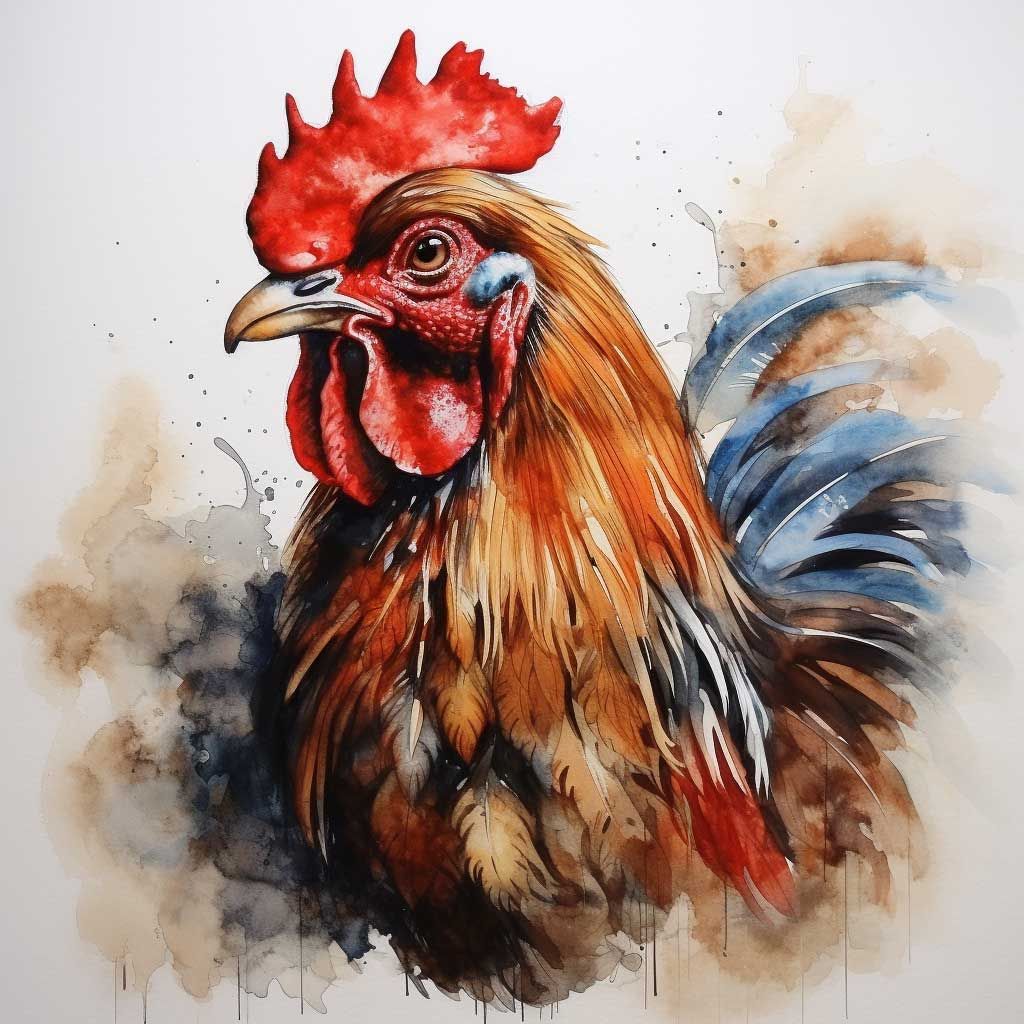
Choosing the Right Chicken Breed for Your Backyard
Raising backyard chickens is a delightful venture, but with countless breeds available, how does one make an informed choice? This article dives into popular chicken breeds, their temperaments, purposes, and even climate considerations, all accompanied by vivid illustrations to guide you in your poultry selection journey.
An Introduction to Popular Chicken Breeds
- Plymouth Rock (Barred Rock):
A dual-purpose breed, these birds are known for their distinctive black and white stripes. They’re excellent egg layers and also provide a decent amount of meat.
- Rhode Island Red:
These deep red birds are one of the most popular breeds in America. Renowned for their egg-laying prowess, they’re hardy and versatile.
- Silkie:
Silkies, with their fluffy plumage and calm demeanor, are primarily ornamental but also lay a fair number of eggs.
- Leghorn:
Originating from Italy, Leghorns are prolific white egg layers and have a spirited personality.
- Cornish Cross:
Primarily raised for meat, they grow rapidly and have a broad, meaty body.
Temperament, Size, and Purpose: The Trio of Considerations
- Temperament:
While some chickens, like the Sussex or the Orpington, are friendly and docile, others like the Leghorn can be more skittish. If you’re looking for a pet or a breed for kids to handle, focus on gentler breeds.
- Size:
Chicken sizes range from the small bantams to the large Jersey Giants. Your choice might depend on space availability and the purpose of raising them.
- Purpose:
– Eggs: Breeds like Rhode Island Red, Leghorn, and Australorp are excellent layers.
– Meat: Broiler chickens, like the Cornish Cross, are ideal if you’re raising chickens for meat.
– Ornamental: Breeds like the Polish or Silkie are kept mainly for their ornate appearances and unique features.
Climate Considerations: Picking the Best Breed for Your Region
-
Cold-Resistant Breeds:
If you reside in a region with harsh winters:
– Plymouth Rock: Their thick feathering helps them manage in colder temperatures.
– Orpington: With dense plumage, they’re perfect for chillier regions.
– Australorp: Originating from Australia, they’ve adapted well to cold climates and are excellent layers.
-
Heat-Tolerant Breeds:
For those in warmer climates:
– Leghorn: They fare well in hot conditions due to their large combs which help in heat dissipation.
– Naked Neck: With fewer feathers around their neck, they can handle heat better than most breeds.
– Rhode Island Red: They’re versatile and can adapt to heat reasonably well.
-
Humidity Considerations:
In areas with high humidity, consider breeds with tighter feathering or smaller combs that are less susceptible to fungal infections.
In conclusion, while the idea of backyard chickens might seem simple at first, choosing the right breed requires a harmonious balance between temperament, size, purpose, and climate considerations. With careful thought and planning, you can select the breed that not only suits your requirements but also thrives in your backyard, bringing you endless joy and plentiful bounty.

Housing Your Flock: Crafting a Safe Haven for Backyard Chickens
Raising backyard chickens is not just about choosing the right breed, but also providing them a safe, comfortable environment. Housing plays a pivotal role in their overall health and productivity. From basic needs like protection and space to designing a bespoke coop, let’s walk through the essentials of housing your feathered friends.
Basic Housing Needs: The Four Pillars
-
Protection:
Chickens need protection from both environmental factors like rain, snow, and direct sun and potential predators such as foxes and raccoons. A solidly built coop with a secure latch can be a lifesaver.
-
Space:
Each chicken typically requires 2-3 square feet inside the coop and 8-10 square feet in an outdoor run. Overcrowding can lead to stress, disease, and reduced egg production.
-
Ventilation:
Good airflow prevents the buildup of ammonia from chicken waste. Proper ventilation also keeps the coop dry, reducing the risk of respiratory diseases.
-
Insulation:
Insulation isn’t about making the coop warm but ensuring it stays dry. A well-insulated coop can protect chickens from extreme temperatures, be it sweltering summers or frosty winters.
Crafting Your Chicken Castle: Designing and Building a Coop
– Foundation: Starting with a strong foundation ensures the coop is durable and keeps out unwanted pests. Raised foundations also offer protection against flooding.
– Materials: Use untreated wood, as chemicals can harm the chickens. For roofing, consider using asphalt shingles or metal roofing for longevity.
– Access: Ensure there’s a human-sized door for cleaning and egg collection, and a smaller door for chickens to enter and exit.
– Windows: Placing windows on the east side allows morning sun, which helps in drying the coop and waking up the chickens.
Inside the Coop: Nesting Boxes, Roosts, and Bedding
-
Nesting Boxes:
– Space: One box for every 3-4 hens is ideal.
– Placement: Keep them dark and positioned lower than roosting bars to prevent hens from sleeping inside.
– Materials: Wooden boxes with a slanted roof prevent hens from roosting on top.
-
Roosts:
– Height: Chickens prefer to sleep off the ground, so place roosting bars 2-4 feet high.
– Design: Use 2x4s with the wide side facing up, allowing chickens to sit comfortably.
-
Bedding:
– Purpose: Bedding absorbs droppings and reduces odor.
– Material Options: Pine shavings, straw, or hay. Refresh regularly to ensure cleanliness.
Guarding the Flock: Predator Protection Strategies
- Reinforce with Hardware Cloth: Replace standard chicken wire with hardware cloth, which is more robust and prevents predators from reaching through.
- Bury the Perimeter: Dig a trench about a foot deep around the coop and run, installing wire mesh to deter digging predators.
- Secure Latches: Raccoons are notorious for their dexterity. Use two-step latches or padlocks to keep doors secure.
- Motion-Activated Lights: Installing these can scare away nocturnal predators. Some chicken keepers also use motion-activated radios for added deterrence.
To summarize, a chicken’s home is its castle. The effort you put into creating a safe, comfortable space will reflect in the health, happiness, and productivity of your flock. As with any venture, the more love and care you invest, the more bountiful the rewards. With a secure, well-designed coop, your chickens can roost in peace, ensuring a harmonious backyard ecosystem for years to come.
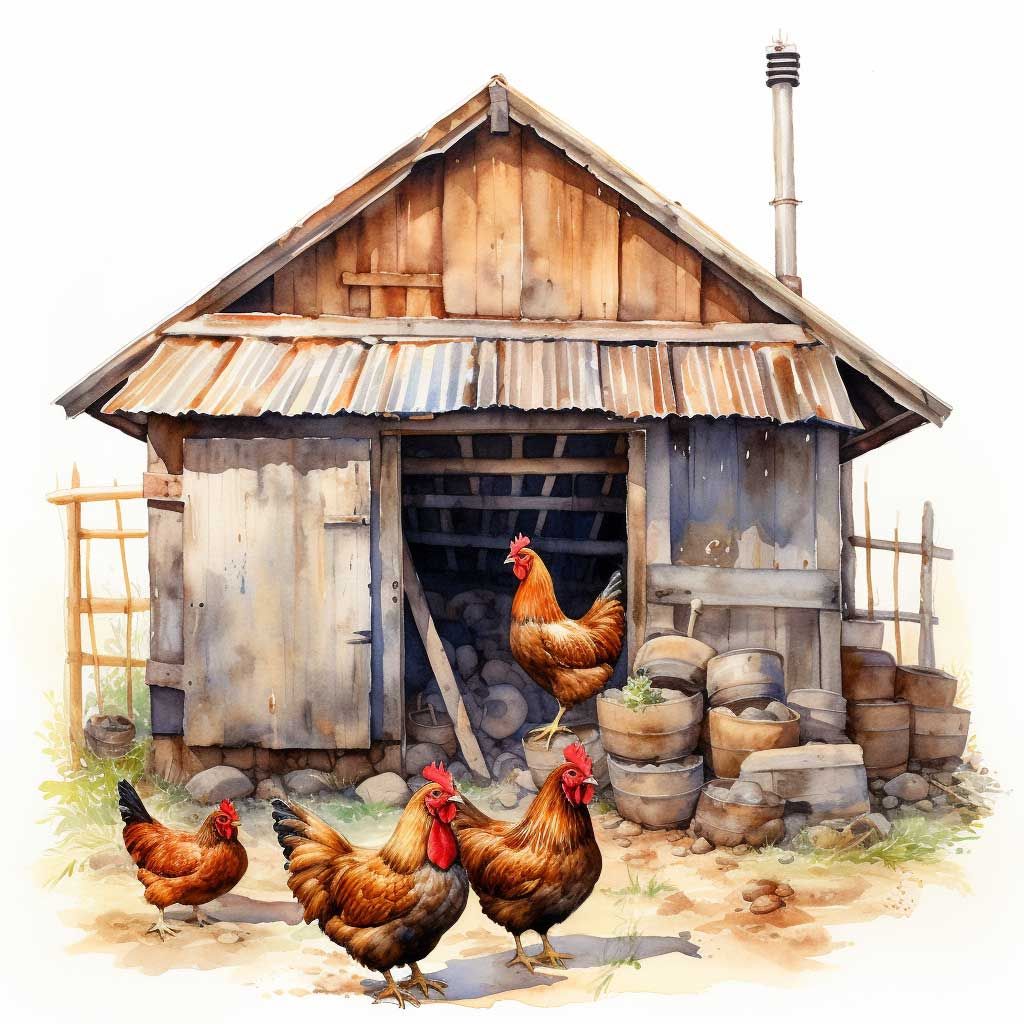
Nutrition and Feeding for Backyard Chickens: A Comprehensive Guide
For backyard chicken enthusiasts, understanding the nutritional needs of their flock is paramount. Proper nutrition is the cornerstone of health, productivity, and longevity in poultry. This article dives deep into the essentials of chicken nutrition, comparing commercial feeds with homemade diets, understanding supplemental feeding, and recognizing the changing dietary requirements throughout a chicken’s life.
-
Basics of Chicken Nutrition
– Proteins: Proteins are vital for growth, feather formation, and egg production. Sources include soybean meal, fish meal, and various grains.
– Carbohydrates: They provide energy. Main sources are corn and grains.
– Fats: Essential for energy and absorption of certain vitamins. It comes from grains and supplemental sources like vegetable oil.
– Vitamins & Minerals: Vital for bone health, blood clotting, and overall metabolism. Sources include leafy greens, grains, and commercial premixes.
– Water: Often overlooked but vital. Chickens need a continuous supply of clean water, especially in hot climates.
-
Commercial Feeds vs. Homemade Diets
– Commercial Feeds:
– Pros: They are nutritionally balanced, convenient, and take the guesswork out of feeding.
– Cons: More expensive, may contain additives.
– Homemade Diets:
– Pros: You know exactly what’s in it, can be more organic/natural.
– Cons: Requires extensive knowledge to balance, time-consuming, and may not be as consistent.
Note: A hybrid approach, using commercial feed as the base and supplementing with homemade components, can be an ideal solution for many backyard farmers.
-
Supplemental Feeding: Grit, Calcium, and Treats
– Grit: Essential for digestion. Chickens don’t have teeth, so they consume grit, which helps grind down grains in their gizzard.
– Calcium: Especially crucial for laying hens. It ensures strong eggshells. Common sources include crushed eggshells and oyster shells.
– Treats: Who doesn’t love treats? Chickens do too! From worms to fruits and vegetables, they can be a delightful addition to their diet but should be given in moderation.
-
Feeding Through Various Life Stages
– Chicks (0-6 weeks): Require “starter” feed, rich in proteins (around 20-24%) for rapid growth.
– Pullets (6-20 weeks): Need “grower” feed with slightly reduced protein (around 18-20%). This supports their growth without accelerating the onset of laying.
– Laying Hens (20 weeks onward): Need “layer” feed with increased calcium content for strong eggshells. Protein content is usually around 16%.
– Senior Chickens: Their dietary needs vary. Some might require lower protein diets, while others might benefit from added vitamins and minerals.
In conclusion, feeding backyard chickens is both an art and a science. Whether you’re treading the path of commercial feeds, dabbling in homemade diets, or walking the middle ground, the key lies in understanding and meeting the nutritional requirements of your flock. With a bit of knowledge and a dash of love, you can ensure your chickens are clucking happily, laying bountifully, and living healthily.
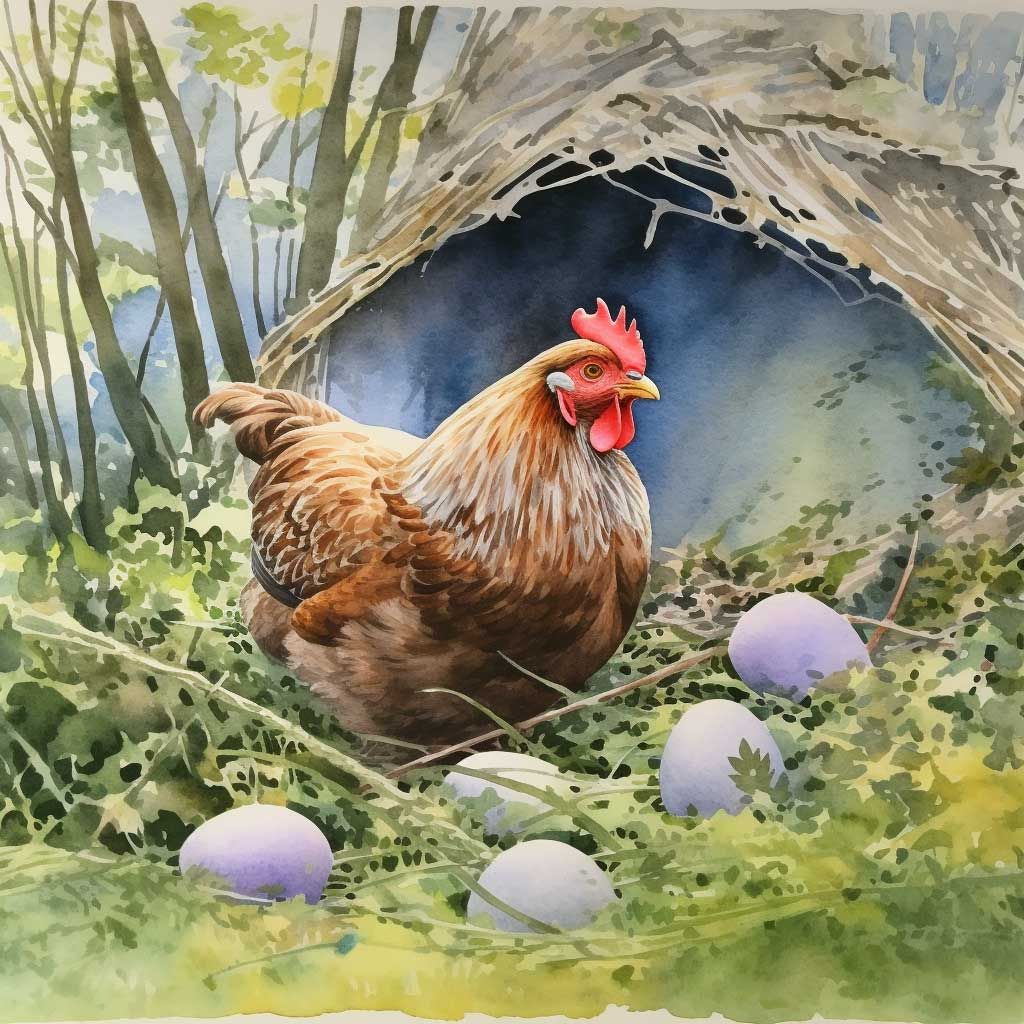
Health and Wellness for Backyard Chickens: Ensuring a Vibrant Flock
When you commit to raising backyard chickens, their health and well-being become a primary concern. Like any other pet or farm animal, chickens are susceptible to various illnesses and diseases. Ensuring their wellness requires knowledge, timely intervention, and a proactive approach. This article provides an in-depth look into the common ailments, prevention techniques, and the importance of consulting professionals.
-
Common Chicken Illnesses and Diseases
Nobody wants to see a backyard chicken that is showing symptoms like ruffled feathers, droopy posture, and a pale comb.
– Marek’s Disease: A viral disease that affects the nervous system. Symptoms include paralysis and tumors.
– Infectious Bronchitis: A respiratory disease leading to coughing, sneezing, and reduced egg production.
– Coccidiosis: Caused by parasites, it affects the digestive system. Blood in droppings is a common symptom.
– Avian Influenza (Bird Flu): Symptoms include swelling, drop in egg production, and respiratory distress.
– Bumblefoot: A bacterial infection in the foot, leading to swelling and lameness.
-
Prevention and Natural Remedies
Picture a group of chickens pecking at herbs and garlic cloves, and a small coop with proper ventilation. For backyard chicken enthusiasts, it’s vitally important to have a clean coop and the opportunity for your chickens to free range.
– Good Sanitation: Keeping the coop clean reduces the risk of bacterial and fungal infections.
– Natural Supplements: Garlic and apple cider vinegar can boost immunity when added to water. Herbs like oregano, thyme, and lavender have antimicrobial properties.
– Diatomaceous Earth: Sprinkled in the coop, it acts as a natural insect repellent, deterring mites and lice.
– Quarantine: New birds should be isolated for a few weeks before introducing them to the flock to prevent potential disease spread.
– Vaccination: Consider vaccinating against the most common diseases, especially if there’s a known risk in your area.
-
When to See a Veterinarian
Imagine a worried farmer holding a chicken with a veterinarian examining it. There are times when the situation gets out of hand, and you really need to see a veterinarian for your backyard free range chickens.
– Persistent Symptoms: If natural remedies don’t alleviate symptoms after a few days, it’s time to consult a professional.
– Severe Illness Signs: Respiratory distress, extreme lethargy, or sudden death in the flock necessitates immediate veterinary intervention.
– Routine Check-ups: Just as with other pets, periodic health check-ups can help spot and address potential issues early.
– Postmortem Examination: If a bird unexpectedly dies, consider a necropsy to determine the cause and prevent further losses.
-
Biosecurity Measures
Picture in your mind a secured coop with a footbath at the entrance and a farmer wearing gloves and a protective apron. This might not be the first think in your mind, when you think of backyard chickens, but their our times when it is “better safe than sorry.”
– Limit Visitors: The fewer people and pets that come into contact with your flock, the better.
– Footbaths: Placing a disinfectant footbath at the coop entrance can prevent the spread of pathogens.
– Change of Clothing: If you visit other poultry farms, change clothes and footwear before interacting with your flock.
– Separate Equipment: Do not share equipment or tools with other poultry keepers unless they’re thoroughly disinfected.
– Wildlife Deterrence: Secure your coop from wild birds and animals. They can be carriers of diseases.
In conclusion, maintaining the health and wellness of backyard chickens is a multifaceted endeavor. While these birds are hardy creatures, they aren’t immune to illnesses. By being vigilant, practicing good sanitation, embracing natural remedies, and not hesitating to seek professional help when needed, you can ensure that your feathered friends lead a happy, productive, and disease-free life.
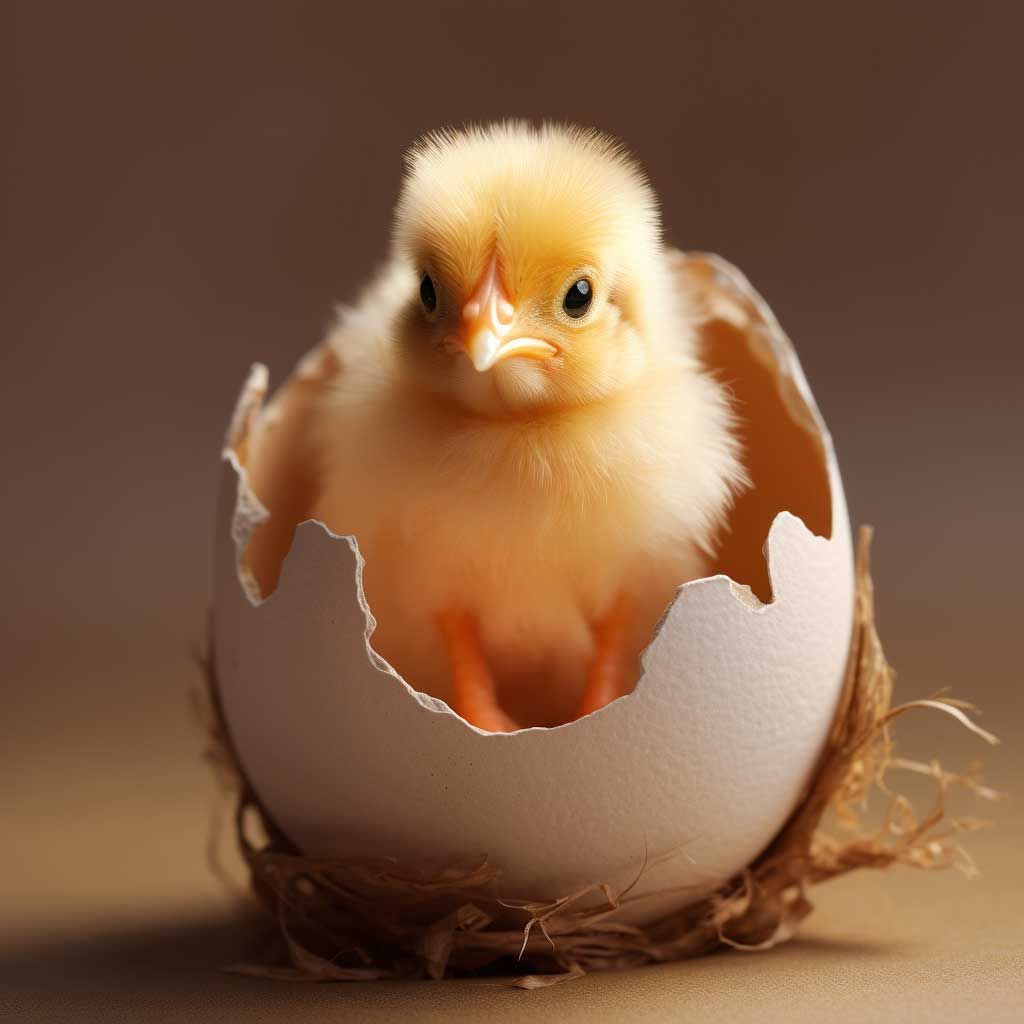
Daily and Seasonal Care for Backyard Chickens: From Routine to Readiness
Raising backyard chickens is a fulfilling journey that promises fresh eggs, natural pest control, and endearing companionship. But like any other endeavor, it comes with its responsibilities. Beyond housing and feeding, chickens require daily care and season-specific attention. Here’s a comprehensive guide to ensuring your flock remains happy, healthy, and productive throughout the year.
-
Routine Tasks: Setting the Pace for a Healthy Flock
Picture a farmer attending to chickens – feeding, watering, and collecting eggs. In this picture, the farmer does not need to be a full-time professional farmer, it could be a stay-at-home mom, a professional accountant, or even a middle school child. The whole family can get involved in raising backyard chickens for free-range chicken eggs.
– Feeding: Chickens should be fed once or twice daily with a balanced poultry feed. Ensure they have consistent access to food by checking and refilling their feeders.
– Watering: Fresh water is paramount. Chickens consume a lot, especially in warmer temperatures. Refill their waterers daily, ensuring they’re clean and free of debris.
– Egg Collection: Collect eggs daily to prevent them from getting dirty or cracked. Regular collection also deters egg-eating behavior among hens.
- Seasonal Considerations: Adjusting Care as Seasons Change
Imagine in your own mind four specific images showing chickens in different seasons – blossoming spring, sunny summer, falling autumn leaves, and snowy winter. As you raise backyard poultry, you need to think through the changing seasons.
– Spring:
– Molting: Some chickens may start molting. Increase protein intake to support new feather growth.
– Nesting: As daylight increases, egg production rises. Ensure nesting boxes are clean and accessible.
– Summer:
– Heat Stress: Chickens struggle in high heat. Provide shade, ample water, and consider adding electrolytes to their drink.
– Dust Baths: Chickens love dust bathing, which helps them cool off. Ensure they have a dry spot for this activity.
– Autumn:
– Molting Redux: Chickens commonly molt in fall. As before, up their protein intake.
– Pre-Winter Preps: Begin winterizing the coop. Check for drafts and insulate if necessary.
– Winter:
– Cold Care: Chickens handle cold better than heat, but below freezing, they need protection. Ensure the coop is draft-free and dry.
– Water Woes: Water can freeze. Use heated waterers or regularly replace frozen water.
-
Dealing with Pests and Parasites: Ensuring a Pest-Free Environment
As a backyard chicken connoisseur, you need to become familiar with several common pests such as mites, lice, and rodents. You may find it necessary to often give your chickens a dust bath.
– External Pests:
– Mites & Lice: These tiny critters can be a nuisance. Regularly check your chickens, especially under their wings and around their vents. Dust baths help, but infestations may require specific treatments.
– Rodents: Rats and mice are attracted to chicken feed. Store feed in rodent-proof containers and ensure the coop is sealed from unwanted guests.
– Internal Pests:
– Worms: Chickens can get intestinal worms. Observe their droppings for signs and deworm if necessary.
– Coccidiosis: A parasitic disease affecting the gut. If chickens seem lethargic or have bloody droppings, consult a veterinarian.
– Prevention: Regularly clean and disinfect the coop. Rotate free-ranging areas to break the life cycle of pests and parasites.
In conclusion, daily and seasonal care for chickens might seem overwhelming initially, but much of it becomes second nature with experience. By understanding the needs of your flock and adjusting care routines as seasons change, you can ensure that your chickens remain in perfect health, come rain or shine. When it comes to backyard chickens and raising your own free-range eggs, always remember that a well-cared-for chicken is a productive and happy one!

The Lifecycle of a Chicken: From Chicks to Sunset Years
Understanding the lifecycle of a chicken is essential for anyone considering backyard poultry. Each stage comes with its joys, challenges, and responsibilities. This guide walks you through the main phases of a chicken’s life, helping you provide the best care at every turn.
-
Raising Chicks: The Delicate First Steps
Picture a dozen fluffy yellow chicks in a brooder with a heat lamp overhead. For many backyard chicken breeders, this is a familiar site as they raise tiny chicks to ultimate become laying hens and give them delicious free range chicken eggs.
– Brooders: The chick’s first home, a brooder, is essentially a safe, warm space that mimics the protective embrace of a mother hen. It typically consists of:
– Container: Your chick container can be a plastic tote or a wooden box. Be creative in coming up with a container that works best for your family and your space.
– Heat Source: Heat lamps are most common. Ensure they’re safely secured to prevent fires. Heat lamps are inexpensive and easy to use. Be very careful not to have any flammable elements near the heat lamp to avoid starting a fire which could damage your chicks or your property.
– Bedding: Pine shavings are ideal as they absorb moisture and odors. While other materials can also work well for bedding, most backyard chicken breeders find that pine shavings (or cedar shavings) end up working the best.
– Feeding: Baby chicks require a specialized feed called “starter feed,” rich in proteins. It helps them grow strong and healthy. You can buy “starter feed” or make your own recipe. Most beginning backyard chicken enthusiasts buy a starter feed. As you become more experienced you may venture out into developing your own recipes.
– Early Care: Chicks are delicate. Monitoring their behavior can help in ascertaining their comfort. For instance, if they huddle under the lamp, they’re cold. If they stay far away, they might be too hot.
-
The Laying Hen: The Fruitful Middle Years
Imagine going out to your backyard and seeing one of your pet hens perched near a nesting box, with eggs visible inside. You see your morning omelet in those shells and know that your pet made the breakfast for you. This is a privilege of backyard poultry producers.
– Egg Production: After about 5-6 months, most hens start laying eggs. Their production is influenced by factors like breed, diet, and light exposure.
– Potential Issues:
– Egg Binding: Sometimes, an egg can get stuck. Calcium supplements and warm baths can help.
– Soft-shelled Eggs: This indicates a calcium or vitamin D3 deficiency. Crushed eggshells or oyster shells can supplement their diet.
– Broodiness: A hen might want to hatch her eggs and refuse to leave her nest. If you don’t plan on hatching, it’s essential to break her broodiness for her health.
-
Roosters: The Controversial Crowing Kings
Seeing a rooster crowing atop a fence post at sunrise is a common sight for backyard chicken raisers.
– Roles of the Rooster:
– Protection: Roosters often protect their flock from potential threats.
– Fertilization: Only with a rooster can hens produce fertilized eggs that can hatch into chicks.
– Challenges of the Rooster:
– Aggression: Some roosters can become aggressive towards humans. Proper handling and training can mitigate this.
– Noise: The early morning crowing can be a disturbance, especially in urban settings.
– Do You Need a Rooster? For egg production, a rooster isn’t necessary. However, for hatching chicks or for added flock protection, they’re beneficial.
-
End of Life Considerations: The Ethical Choices of Chicken Keeping
Picture an old hen basking in the sun, looking peaceful. As your chickens grow to old to lay eggs, the backyard chicken enthusiast needs to make the best decisions about what to do with the old hens.
– Aging Hens:
– Their egg production decreases after 2-3 years but can live for 5-10 years or more. As they age, they may require special care, especially regarding diet and protection from predators.
– Culling:
– Some backyard chicken keepers choose to cull their hens once they’re past their prime egg-laying years. This is a personal decision and can be based on space, resources, or the chicken’s health.
– Ethical Considerations:
– It’s essential to approach the end-of-life decisions with compassion and ethics in mind. Whether you choose to let your hens live out their natural lifespan or decide on culling, ensuring they have a life free from suffering is paramount.
In conclusion, raising backyard chickens is a journey through various stages of life. The backyard chicken enthusiast enjoys a wide range of emotions through the various life stages of your poultry. From the fragile chirps of the chicks to the dignified grace of an aging hen, each phase offers unique experiences and learning. By understanding and anticipating the needs of each lifecycle stage, you can ensure your chickens have a fulfilling, healthy, and contented life.

Expanding Your Flock: Breeding, Incubating, and Harmonious Integration
Raising backyard chickens is not just about having a few hens for fresh eggs. As time progresses, many enthusiasts think about expanding their flock. This expansion can be through breeding, incubation, or introducing new chickens. But how does one ensure the growth of a healthy and harmonious flock?
-
Breeding Chickens: The Science and Art of Genetics and Selection
The backyard chicken enthusiast needs to remember that different chicken breeds can each showcase their unique features. For someone wanting free range eggs, you may want to consider whether you want to have a variety of chicken breeds in your backyard.
– Understanding Chicken Genetics:
– Chickens, like all animals, have complex genetic makeups that determine everything from feather color to egg production.
– By understanding the basics of chicken genetics, you can predict potential outcomes in offspring, allowing for selective breeding.
– Selective Chicken Breeding:
– It’s the practice of mating specific chickens to produce desired traits in the offspring.
– For example, if you want a breed that’s docile and good for egg-laying, you’d select parent chickens showcasing these traits.
– Remember, while selective breeding can enhance positive traits, it may also amplify negative ones. Always diversify your gene pool to avoid complications.
-
Incubating Eggs: Nurturing Life Outside The Hen
Picture a modern egg incubator with visible, marked eggs inside. Many backyard chicken breeders find it helpful to use an egg incubator, and the newer incubators have a number of helpful options.
– Choosing the Right Equipment:
– While a hen can naturally incubate her eggs, using an incubator can provide more control and higher success rates.
– Incubators come in various sizes and functionalities. Some are manual, requiring you to turn the eggs, while others are automatic.
– Best Egg Incubator Practices:
– Temperature: Maintain a consistent temperature, usually around 99.5°F (37.5°C) for forced-air incubators and slightly higher for still-air models.
– Humidity: Keeping a humidity level of 40-50% for the first 18 days and 65-75% for the last few days is crucial.
– Turning Eggs: Unless you have an auto-turn incubator, turn the eggs at least 3 times a day to prevent the embryo from sticking to the shell.
– Monitoring: Using a candling tool, monitor the development of the embryo. This is a flashlight-like tool that lets you see inside the egg.
-
Introducing New Chickens: Fostering Friendship in the Flock
It is enjoyable to watch older hens in your flock observing a newcomer from behind a partition. You definitely want to introduce new laying hens by initially keeping them in quarantine. The back yard chicken enthusiast should be better safe than sorry.
– Quarantine First:
– Before introducing new chickens, keep them separated for 2-4 weeks. This helps ensure they’re not carrying any diseases that could spread to your existing flock.
– Gradual Introduction:
– Use a partition: Let your old and new birds see and get used to each other without physical contact. This reduces the chances of aggression.
– Shared free-range time: Once accustomed, let them free range together. The open space allows them to establish their pecking order without too many squabbles.
– Monitoring Behavior:
– It’s natural for some squabbling as chickens establish their pecking order.
– However, watch for signs of excessive bullying or aggression. Separating the aggressive bird for a few days can help reset its behavior.
Conclusion to Flock Expansion: Breeding, Incubating, and Harmonious Integration
Expanding your flock is an exciting endeavor that brings fresh dynamics to your backyard poultry setup. Whether you’re diving into the intricacies of genetics, experiencing the magic of incubation, or navigating the politics of chicken integration, each step is a learning experience. By approaching each stage with knowledge, patience, and care, you can ensure your flock grows harmoniously, bringing you continued joy and plentiful rewards.
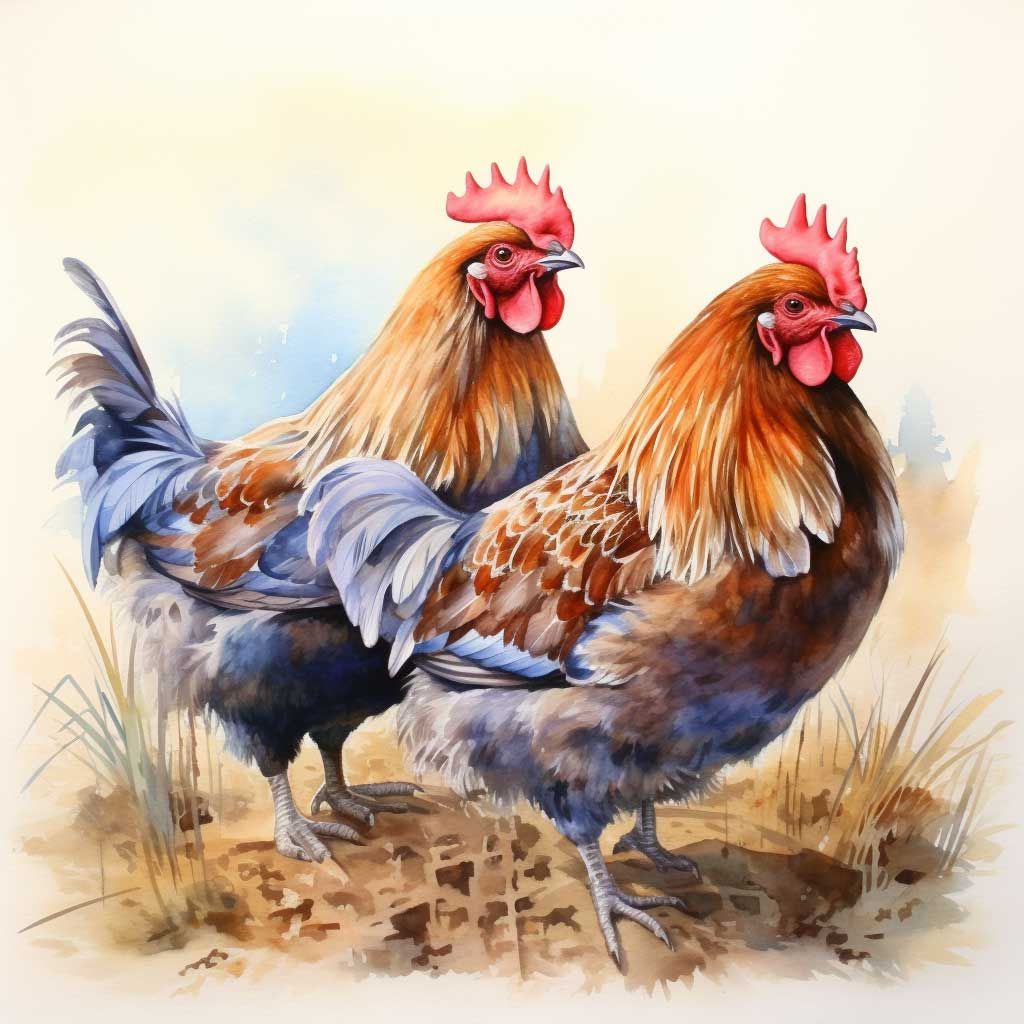
Harvesting and Using Fresh Eggs from Your Backyard Chickens
There’s nothing quite like collecting a fresh egg from your backyard coop. The rich yolk and firm white of a home-raised egg are testament to the care and attention you give your hens. But once you’ve gathered your eggs, how should you store them? And when you crack one open, do you know what you’re looking at? Let’s delve into the world of harvesting and using fresh eggs.
-
Collecting and Storing Eggs
As a backyard chicken breeder, imagine one of your kids lifting an egg from a straw-lined nesting box. Your son or daughter then takes the egg into the house to start making breakfast.
– When and How Often to Collect:
– Eggs should be collected at least once, preferably twice, daily. Regular collection ensures cleanliness and reduces the risk of breakage.
– Early morning and late afternoon are often the peak laying times.
– Cleaning Eggs:
– Fresh eggs may sometimes be soiled. Wipe off any debris with a dry cloth. Only wash eggs that are very dirty, and use warm water. Cold water causes the egg to contract, potentially drawing bacteria into the egg.
– Eggs have a natural protective layer called the “bloom” which helps to keep out bacteria. Washing removes this layer.
– Storing Fresh Eggs:
– Store eggs in the refrigerator for maximum freshness. While they can be kept at room temperature for a short time, refrigeration extends their shelf life.
– Pointy end down: This helps the yolk remain centered and keeps the air cell at the top, maintaining freshness.
– Fresh backyard eggs can typically last for 4-5 weeks when refrigerated.
-
Understanding Egg Anatomy and Potential Abnormalities
– Egg Basics:
– Shell: The hard exterior, primarily made of calcium carbonate. It’s porous, allowing the egg to breathe.
– White (Albumen): Contains water and protein. It’s slightly alkaline and serves as a protective layer for the yolk.
– Yolk: The nutrient-rich center, housing proteins, fats, and vitamins.
– Chalaza: These are the twisted, rope-like structures that keep the yolk centered.
– Egg Abnormalities:
– Double Yolks: Occasionally, an egg will have two yolks. This is more common in young hens whose egg production cycles are not yet regular.
– Blood or Meat Spots: Tiny bits of tissue or blood. They’re harmless and can be eaten or removed.
– Shell-less Eggs: Often laid by young hens or hens with a calcium deficiency. These eggs have a soft membrane but no hard shell.
-
Recipes and Uses for Fresh Eggs
Picture a sunny-side-up egg on a plate, with a rich, golden yolk. For the backyard chicken breeder, the site of a breakfast egg takes on new meaning, when you know the egg was given to you by your own pet chickens.
– Morning Scramble:
– Fresh eggs have a richer yolk that lends itself to a creamier, more flavorful scramble. Add some herbs and cheese for a delightful breakfast.
– Poached Perfection:
– The firm whites of fresh eggs hold together better, making them ideal for poaching. Serve atop toasted bread with a sprinkle of salt and pepper.
– Egg Pasta:
– Combine flour and fresh eggs to create a rich pasta dough. The deep yellow yolk gives the pasta a vibrant color and robust flavor.
– Preserving:
– Fresh eggs can be pickled, extending their shelf life and offering a tangy treat. Additionally, consider making a custard or curd that captures the fresh flavor and can be stored for later use.
– Beauty and Home Uses:
– Egg whites can be used as a facial mask, providing a skin-tightening effect. The rich yolk, when combined with other ingredients, can serve as a hair conditioner.
– Eggshells, when crushed, can be sprinkled in the garden as a natural pest deterrent and calcium source for plants.
Conclusion
Having backyard chickens is a rewarding experience, and part of that reward is the plethora of fresh eggs. From the moment of collection to savoring the last bite of an egg-based dish, each step is a testament to nature’s brilliance and your care as a poultry keeper. With knowledge on your side, each egg becomes not just food, but a story of life, care, and the wonders of nature.

If Meat Birds Are Your Goal: A Comprehensive Guide to Raising and Processing Backyard Chickens
Raising backyard chickens for meat can be an enriching and self-sufficient venture. However, it’s essential to understand the differences between layer breeds and meat breeds, the process of raising them, and the ethical considerations involved. Let’s embark on this journey, from selecting the right breed to enjoying a home-cooked meal.
-
Differences Between Layer Breeds and Meat Breeds
Picture side by side images of a typical layer breed like the Rhode Island Red and a meat breed like the Cornish Cross. The backyard chicken enthusiast will notice significant differences in birds bred for eggs rather than chickens that are bred for meat.
– Layer Breeds:
– Purpose: Primarily bred for egg production.
– Physical Traits: Slimmer bodies, lighter weight, and higher egg production.
– Lifespan & Productivity: Longer life, but with declining egg production after a few years.
– Meat Breeds:
– Purpose: Bred specifically for meat due to their rapid growth and substantial meat yield.
– Physical Traits: Broader breasts, heavier weight, and less feathering in some breeds to make processing easier.
– Growth Rate: Faster growth rate, typically ready for processing between 6-10 weeks of age.
-
Raising Meat Chickens: From Chick to Processing
Picture a timeline showing a chick maturing into a full-grown chicken. For the backyard chicken breeder enthusiast, you get to experience the timeline of watching your chicks grow.
– Start With Healthy Chicks: Source chicks from reputable breeders or hatcheries to ensure health and breed purity.
– Feeding: Meat birds require a higher protein diet to support their rapid growth. Ensure they receive a specially formulated broiler feed.
– Housing & Space: Unlike layers, meat birds are less active. However, they still need ample space to prevent overcrowding and ensure good health.
– Health Monitoring: Due to their rapid growth, meat birds can be susceptible to leg issues and heart strain. Regularly check for signs of distress or illness.
-
Ethical and Humane Considerations in Processing
If a backyard chicken breeder decides to raise chickens for meat, it’s important to have a calm and serene processing setup with emphasis on cleanliness and order.
– Know Your Reason: Understand why you’re raising meat birds. Whether it’s for self-sufficiency, knowing the source of your food, or ethical concerns about factory farming, being clear on your motives will guide you through the challenging parts.
– Humane Processing: The goal is a quick and stress-free end. Familiarize yourself with best practices and perhaps attend a workshop or seek mentorship.
– Emotional Preparedness: Taking a life, even for food, is a weighty responsibility. It’s natural to have mixed emotions. Reflect, discuss, and seek support if needed. For families with children, it is important to think through how much you will communicate to your kids as they can form attachments to the chickens as pets.
-
Preserving and Cooking Your Harvest
There can be a wide array of preserved chicken products – smoked, canned, frozen, and even roasted chicken.
– Preservation:
– Freezing: The most common method. Ensure chickens are appropriately dressed, bagged, and free of air pockets to prevent freezer burn.
– Canning: Chicken meat can be pressure canned to ensure long shelf life and quick meals.
– Smoking: Adds flavor and acts as a preservative.
– Cooking:
– Home-raised meat birds often have a richer flavor than store-bought counterparts. They can be leaner and may benefit from slower cooking methods to retain moisture.
– From roasting to grilling, stewing to frying – each method offers a unique taste experience. Incorporate herbs and spices for added flavor.
– Always ensure chicken is cooked to a safe internal temperature.
Conclusion
Raising chickens for meat offers an alternative to the commercial poultry industry, granting you control over the quality of your food and the welfare of the birds. With knowledge, preparation, and a respectful approach, you can ensure that your venture into raising meat birds is ethical, humane, and culminates in a nutritious and delicious meal for your family.
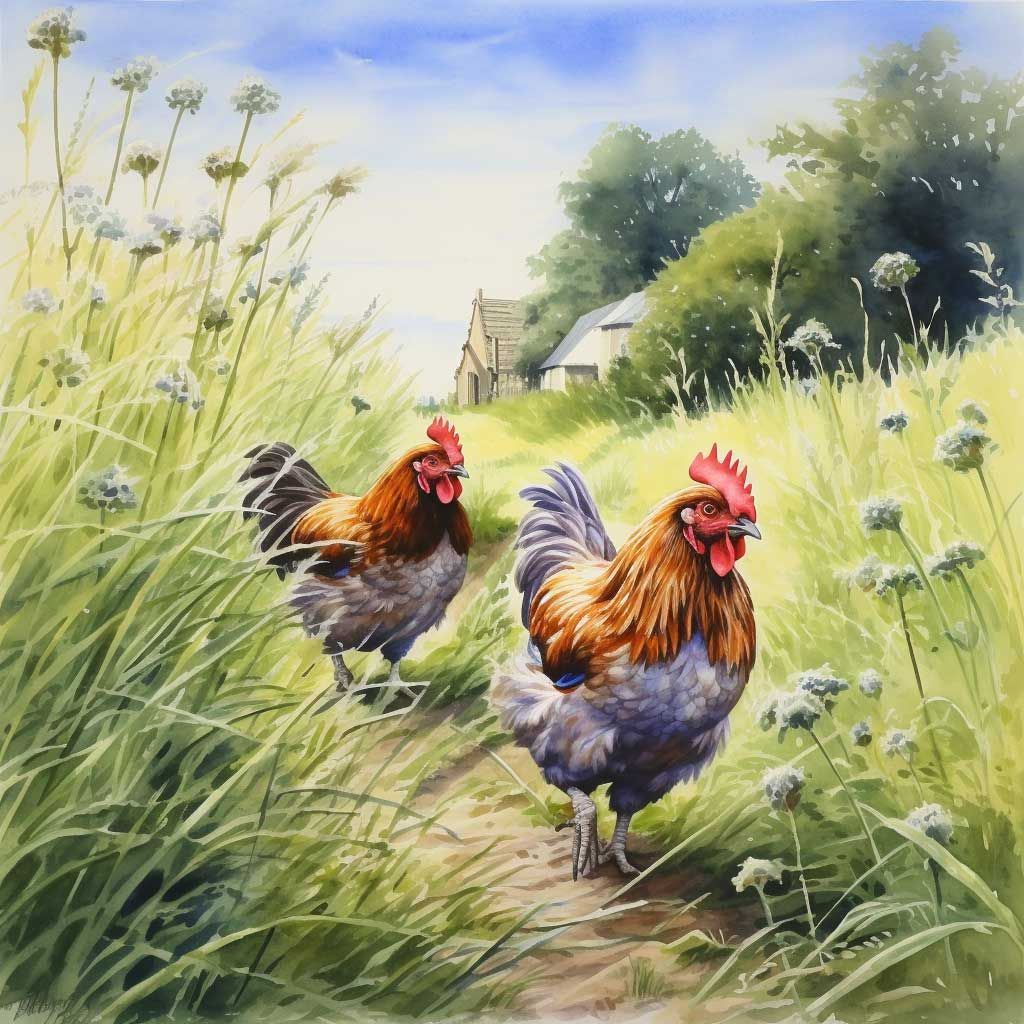
Beyond the Basics: Delving Deeper into the World of Backyard Chickens
The world of backyard poultry isn’t just about fresh eggs every morning or the joyful clucks of hens scratching in the yard. For many enthusiasts, it becomes a deeper journey into advanced poultry keeping, community engagement, and even entrepreneurial ventures. If you’re considering stepping beyond the basics, this article will guide you through the more advanced aspects of the poultry world.
-
Advanced Poultry Keeping: Rare Breeds, Showing, and More
Imagine an array of rare chicken breeds with vibrant plumes and unique combs. Some backyard chicken enthusiasts focus on raising rare chicken breeds rather than the more normal varieties.
– Rare and Heritage Breeds: These chickens often come with a history. They might be breeds that have existed for centuries but are now in danger of extinction.
– Why Keep Them? Preserving genetic diversity, unique egg colors, and connecting with poultry history.
– Examples: Ayam Cemani (a completely black chicken from Indonesia), Cream Legbar (blue egg layers), and the fluffy Silkie.
– Showing Chickens: For those who take great pride in their poultry, chicken shows offer a platform to showcase their best birds.
– Preparation: Training, grooming, and understanding breed standards.
– Rewards: Beyond ribbons and trophies, it’s about the pride of raising a prize-winning bird and connecting with like-minded enthusiasts.
-
Selling Eggs and Chicken Products: The Business Angle
Picture your local farmer’s market stall displaying a range of chicken products, from colorful eggs to homemade chicken jerky. Depending on your local farmer’s market, you may find it fairly easy to sell a variety of eggs to your local community.
– Local Regulations: Before you start selling, it’s imperative to familiarize yourself with local laws.
– Health and Safety: This may involve periodic inspections, ensuring that eggs are collected, cleaned, and stored correctly.
– Labeling and Claims: Understand what you can and cannot claim. For instance, the term “organic” usually has strict guidelines.
– Pricing Your Products: Consider your costs (feed, care, housing), market demand, and the uniqueness of your product (like rare egg colors).
– Marketing: In today’s digital age, leverage social media, build an attractive website, and engage with potential customers at local farmer markets or community events. Storytelling is vital – people love to hear about the happy hens that lay their breakfast eggs!
-
Engaging with the Wider Poultry Community
Imagine a community meetup with poultry enthusiasts exchanging stories, birds, and advice. For backyard chicken breeders, these become some of your favorite stories to tell.
– Poultry Clubs and Associations: These organizations often host events, educational seminars, and shows. Joining can be an excellent way for novices to learn from seasoned experts.
– Online Forums and Social Media Groups: Some Backyard Chicken Websites have forums where you can ask questions, share experiences, or discuss advanced topics.
– Workshops and Courses: As the backyard chicken movement grows, so does the number of courses on offer. These can range from basic care to advanced topics like genetics and breeding.
– Mentorship: If you’re serious about a specific poultry aspect, like showing or breeding, finding a mentor can be invaluable. They can offer tailored advice, support, and even resources.
Conclusion
The world of backyard chickens is as vast and varied as the breeds that grace our coops. As you delve deeper into this avian adventure, remember that every chicken keeper’s journey is unique. Whether you’re showcasing a prize-winning bird, preserving a rare breed, or selling the freshest eggs in town, the poultry community is vibrant, welcoming, and always eager to share in your clucking successes.

Challenges and Troubleshooting in Backyard Chicken Keeping
Raising backyard chickens can be a delightful experience, but like any endeavor, it presents its fair share of challenges. From behavioral quirks to the ever-looming threat of predators, being prepared can make all the difference. In this article, we’ll delve into some of the common problems chicken keepers face and offer solutions to keep your flock happy and safe.
-
Addressing Behavioral Issues
Picture these three chickens: A hen pecking at the ground, another one showing broody behavior by nesting, and a rooster exhibiting aggressive posture. For the backyard chicken breeder, you can encounter specific behavior issues with certain hens or roosters.
– Pecking Issues:
– *Cause*: Pecking can be a result of overcrowding, lack of stimulation, nutritional deficiencies, or even stress.
– *Solution*: Ensure your chickens have adequate space and access to enrichment like dust baths and pecking toys. Regularly inspect for injuries, as chickens can peck at open wounds. Consider providing a balanced diet with necessary supplements.
– Broodiness:
– *Cause*: Broodiness is a natural behavior when a hen wants to hatch eggs. She will often stay on the nest, become aggressive, and stop laying.
– *Solution*: If you’re not looking to hatch chicks, you can discourage broodiness by removing eggs promptly. For persistent hens, consider a “broody breaker” setup—essentially a well-ventilated cage with a wire bottom that prevents the hen from getting cozy.
– Aggression:
– *Cause*: Aggression can be due to territorial disputes, especially if you have multiple roosters, or changes in the pecking order.
– *Solution*: Monitor aggressive birds and, if necessary, separate them for a cooling-off period. Providing hiding spaces and multiple feeding/watering spots can reduce conflicts.
-
The Threat of Predators
Imagine a nocturnal scene with a raccoon trying to dig under a coop and an owl perched on a branch, watching the chickens. For the backyard chicken enthusiast, there are an unfortunate number of predators. Chickens are quite helpless by themselves.
– Common Backyard Chicken Predators: Depending on your region, predators can range from raccoons, foxes, and coyotes to birds of prey.
– Deterring Strategies:
– *Physical Barriers*: Ensure your coop has a solid floor or is reinforced with buried wire mesh to deter digging predators. Use hardware cloth instead of chicken wire for better protection.
– *Light and Sound*: Motion-activated lights or radios can deter nocturnal predators.
– *Natural Deterrents*: Dogs or even geese can be excellent guardians for your flock. Their presence alone can keep many potential predators at bay.
– *Routine Checks*: Regularly inspect your coop and run for signs of attempted break-ins, weak spots, or damage.
-
Egg Production Issues
Picture a child carrying a basket with varied eggs—some with thin shells, others with irregular shapes. When you raise backyard chickens, the eggs that you receive don’t always look perfect.
– Inconsistent Laying:
– *Cause*: Factors can range from age, diet, stress, to environmental conditions.
– *Solution*: Ensure a consistent light schedule, provide a balanced diet with adequate calcium, and reduce stressors.
– Soft-shelled or Misshapen Eggs:
– *Cause*: Typically due to dietary imbalances or age.
– *Solution*: Supplement with calcium, either through crushed oyster shells or eggshell, and ensure they have access to grit.
– Egg-eating:
– *Cause*: Often a result of accidental discovery (a hen breaks an egg and finds it tasty) and then becomes a habit.
– *Solution*: Collect eggs frequently, provide adequate nesting space, and ensure a calcium-rich diet to prevent weak shells. In persistent cases, consider isolating the culprit.
Conclusion
Every challenge in backyard chicken keeping offers an opportunity to learn and grow as a poultry keeper. With patience, preparation, and a bit of knowledge, you can navigate these issues with ease, ensuring that your flock remains healthy, happy, and productive. Remember, the joys of chicken keeping far outweigh the hurdles—and with each challenge overcome, your bond with your feathered friends only strengthens.
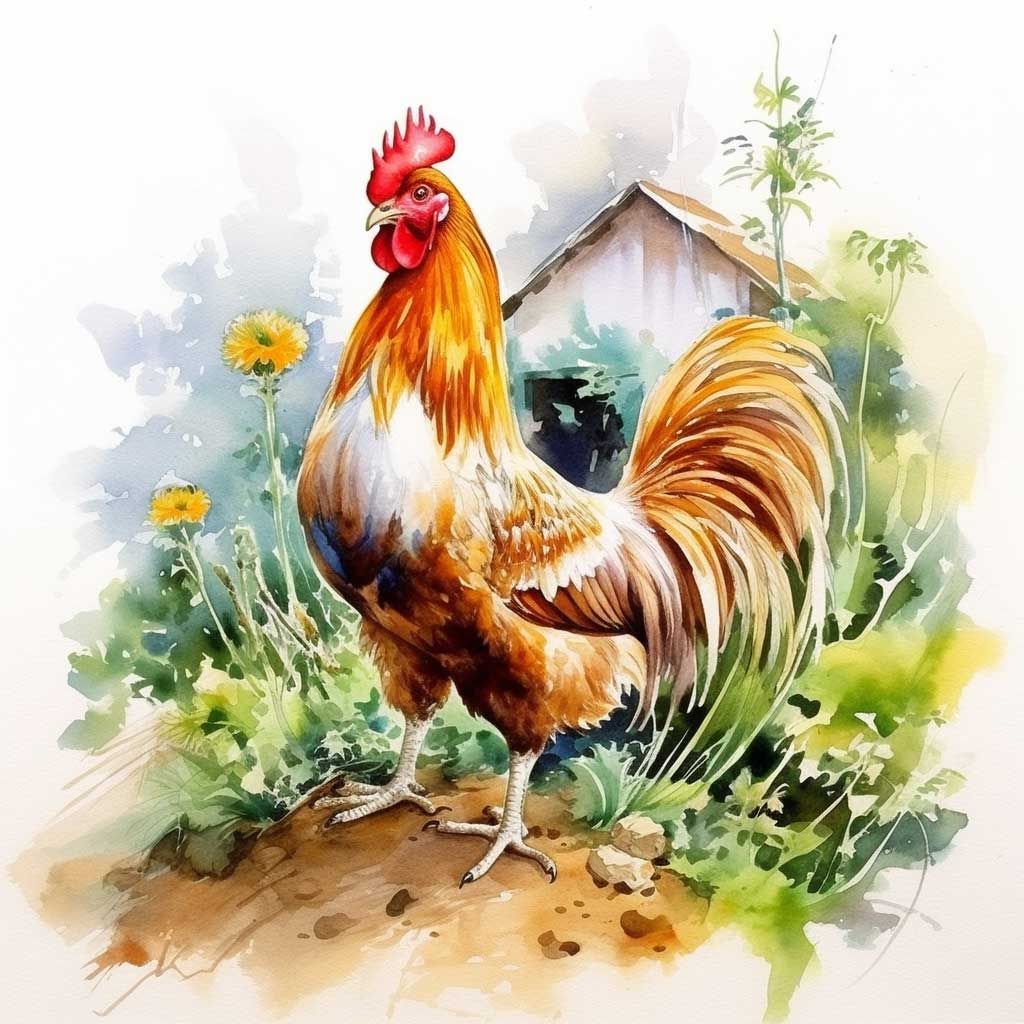
Fun and Fulfillment with Chickens
Raising chickens isn’t just about fresh eggs and sustainability. For many enthusiasts, it’s also about forging a bond with these quirky, charming creatures. Chickens offer companionship, joy, and even moments of unexpected hilarity. This article sheds light on how chickens can be fantastic pets, how to engage with them, and how to share the wonder of backyard poultry with others.
-
Chickens as Pets and Companions
Imagine your young child cuddling a fluffy hen, both sitting on a porch swing. Companionship is something that the backyard chicken breeder can look forward to.
– Personality Galore: Each chicken has its distinct personality. From bossy hens to shy pullets and curious roosters, there’s a rich tapestry of behaviors and quirks within a flock.
– Bonding with Your Birds: Spending quality time with your chickens, whether it’s during feeding or free-ranging sessions, can foster trust. Hand-feeding treats, talking to them, or simply sitting among them can forge strong bonds.
– Beyond Eggs: Many chicken keepers find solace in their flocks. Watching chickens scratch, peck, and roost has a therapeutic, meditative quality that can be a balm for the hustle and bustle of modern life.
-
Activities and Games for Chickens
Picture a group of hens pecking at a hanging cabbage, with others chasing a ball. It’s fun to watch your backyard chickens have fun.
– Treat Dispensers: Consider treat balls or other poultry-specific toys where chickens can peck and play, dispensing small amounts of treats as a reward.
– Veggie Piñatas: Hang leafy vegetables like cabbages or lettuces from a string in the run. Chickens will jump and peck at it, offering both nutrition and entertainment.
– Mirror Play: Chickens are naturally curious. Safe, shatterproof mirrors can be a source of fascination. However, monitor to ensure no aggressive behaviors develop.
– Mazes and Obstacle Courses: With a little creativity, you can design mazes using hay bales or wood. Place treats along the way and watch as your chickens navigate the route.
– Balls and Bells: Some chickens enjoy pushing lightweight balls around or pecking at hanging bells, much like pet birds. Ensure all toys are safe and free from small, ingestible parts.
-
Sharing the Joy: Educating Others About Backyard Chickens
Picture a group of children watching a chicken demonstration at your local school. The backyard chicken breeder can use your chickens as an opportunity to influence your community.
– Open Your Coop: Host “open coop” days where neighbors, friends, and family can visit your flock. This provides an excellent opportunity to educate people about chickens and dispel any misconceptions.
– School Visits: If regulations allow, consider taking a friendly hen to local schools or community groups. Hands-on experiences can be invaluable for children, teaching them about animal husbandry, respect for animals, and where their food comes from.
– Document Your Journey: Start a blog or social media account dedicated to your backyard flock. Share pictures, stories, and insights. The online poultry community is vast and welcoming, and newcomers can benefit from your experiences.
– Join or Start a Club: Many towns have poultry or homesteading clubs. These groups can be a hub for learning, sharing, and promoting ethical poultry practices within the community. If none exists in your area, consider starting one!
– Workshops: Host or participate in workshops about chicken care, egg recipes, or DIY coop building. It’s a great way to network and share your passion.
Conclusion to Fun and Fulfillment with Your Backyard Chickens
Chickens are so much more than just egg-layers. They can be friends, therapists, and teachers, enriching our lives in unexpected ways. By actively engaging with your flock and the community, you can tap into the deeper joys of poultry keeping. Tap into a joy that transcends the coop and nestles in the heart. Whether you’re playing games with your hens or sharing their wonders with a child, chickens promise fun and fulfillment in abundance.
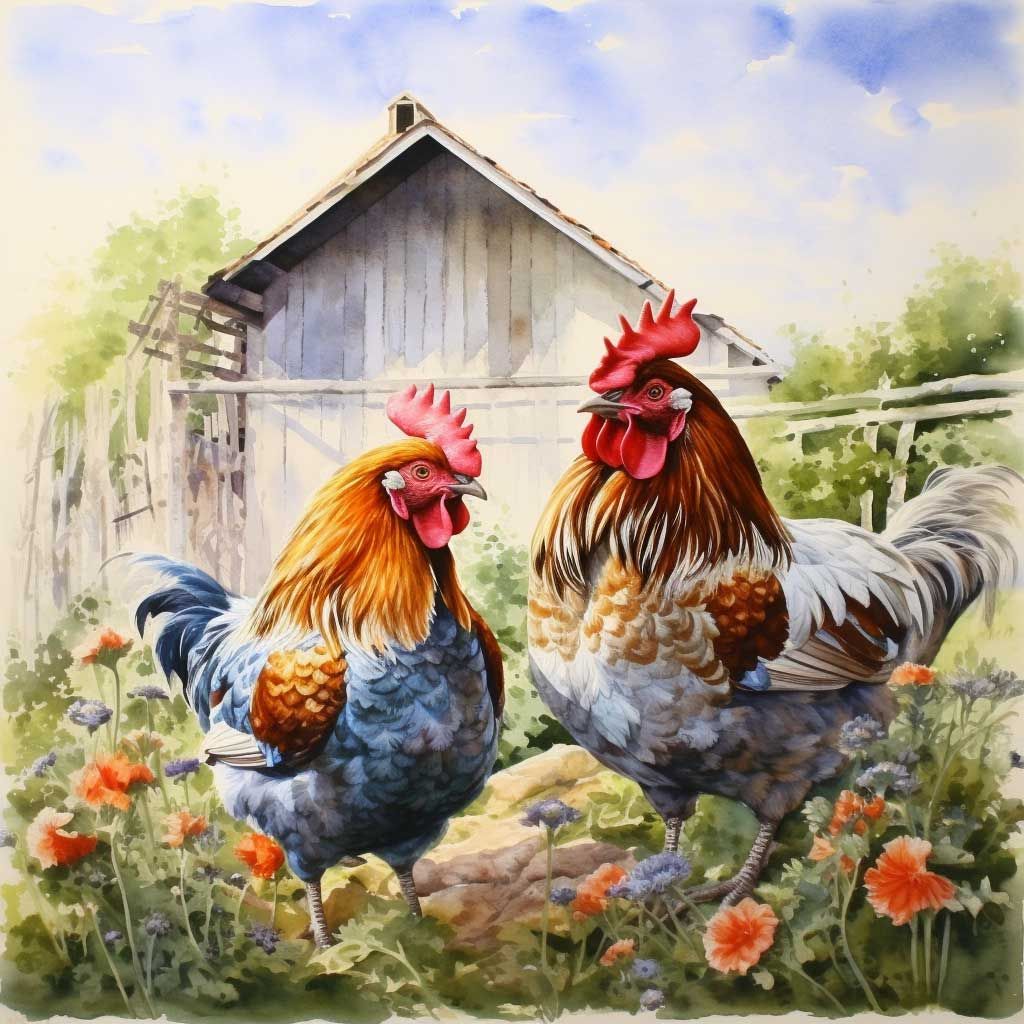
The Joys and Challenges of Raising Backyard Chickens
Raising backyard chickens has surged in popularity in recent years. More and more families are discovering the multifaceted benefits of keeping a flock right at home. But, like any endeavor, poultry keeping comes with its unique set of joys and challenges. Let’s dive in.
-
The Joys of Backyard Chickens
Imagine a serene morning scene with hens foraging amidst dappled sunlight. This is a normal morning sight for the backyard chicken enthusiast.
– Fresh Eggs Daily: Perhaps the most tangible benefit of keeping chickens is the daily bounty of fresh, organic eggs. Home-laid eggs, with their rich, orange yolks, not only taste better but are also nutritionally superior to store-bought versions.
– Natural Pest Control: Chickens are voracious insect eaters. They’ll happily forage your yard for beetles, ticks, worms, and more, acting as a natural pest control and reducing the need for chemicals.
– Companionship and Entertainment: Chickens are social, curious, and full of personality. Many keepers find watching their chickens’ antics and behaviors to be a source of relaxation and joy. They’re not merely livestock; they can also be lovable pets.
– Teaching and Learning Opportunities: For families with kids, chickens offer a hands-on educational experience. Children learn about responsibility, the food chain, biology, and more, all from their backyard.
– Sustainability: Beyond eggs, chickens provide rich manure that can be composted for garden use. This cycle of sustainability—where kitchen scraps feed the chickens, whose waste, in turn, nourishes the soil—reinforces a natural, eco-friendly lifestyle.
-
The Challenges of Keeping Chickens
Picture a mother hen examining a broken egg in the nesting box. Raising backyard chickens is not always perfectly easy. There are several challenges that come with raising free range chickens and getting your own eggs each morning.
– Predators: Chickens are prey animals, attracting a slew of predators like foxes, raccoons, hawks, and even neighborhood cats or dogs. Protecting your flock requires vigilance, secure housing, and sometimes, innovative solutions.
– Health Issues: Chickens, like all animals, are susceptible to a range of illnesses and parasites. New keepers must be prepared to learn about potential ailments, treatments, and when to consult with a vet.
– Zoning and Legal Issues: Not every municipality or homeowners’ association allows backyard chickens. It’s crucial to understand local regulations, which might dictate the number of birds you can keep, coop specifications, and more.
– Daily Commitment: Chickens need daily care, including feeding, watering, and egg collection. This commitment can be challenging for families who travel or have unpredictable schedules.
– Social Dynamics: Within a flock, there’s a pecking order. Sometimes, this can lead to bullying or aggression. Understanding and managing these dynamics to ensure all birds are safe and stress-free is an essential aspect of chicken keeping.
-
Balancing Joys with Challenges
For the backyard chicken breeder, there’s certainly an equilibrium between pros and cons and raising your own chickens (for either eggs or meat).
– Preparation is Key: Many challenges can be mitigated with research and preparation. Before diving in, attend workshops, read books, or join online chicken communities for advice.
– The Right Set-Up: Investing in a secure, spacious coop and run can ward off many potential issues, from predators to diseases.
– Stay Engaged: Regular interaction with your flock—not just during chore time—can clue you into issues early on, whether it’s a sick hen or a potential bully.
– Seek Community Support: Connect with local poultry clubs or online forums. Fellow chicken enthusiasts can offer invaluable advice, resources, and support.
Conclusion of the Joys and Challenges of Raising Backyard Chickens
Raising backyard chickens is a journey filled with highs and lows. The fresh morning eggs, the delightful clucks, and the amusing antics undoubtedly add joy and richness to life. However, it’s essential to approach poultry keeping with eyes wide open, understanding, and preparing for the challenges that lie ahead. With research, support, and a touch of patience, the joys can undoubtedly outweigh the obstacles, making the adventure of backyard chickens a fulfilling one.
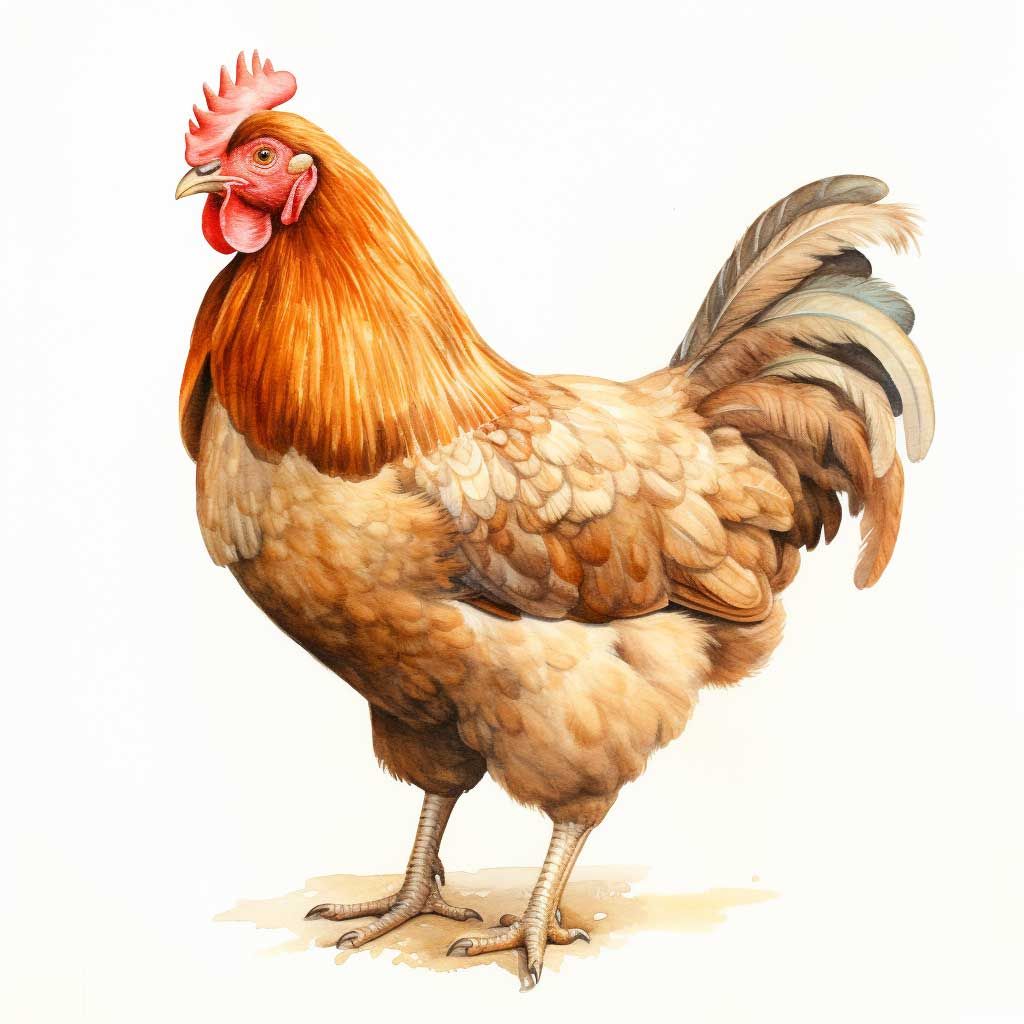
The Broader Benefits of a Self-Sustaining Lifestyle: Beyond Backyard Chickens
A vision of chickens pecking away peacefully in a backyard is one that epitomizes the self-sustaining lifestyle for many. Yet, this image is merely the tip of the iceberg. Diving into a self-sustaining way of living extends far beyond poultry and offers a myriad of benefits, from environmental conservation to personal well-being. Here’s an exploration of the broader perks of self-sufficiency.
-
Reduced Environmental Footprint
– Local Food Sources: Growing your food, whether in the form of backyard chickens, vegetable gardens, or even beehives, significantly reduces the carbon footprint associated with transporting goods long distances.
– Waste Reduction: Composting kitchen waste and using it to nourish garden soil not only reduces landfill contributions but also minimizes the need for chemical fertilizers.
– Water Conservation: Collecting rainwater for garden use or employing graywater systems significantly cuts down on water usage, preserving this precious resource.
-
Health and Nutritional Benefits
– Organic and Fresh: Homegrown produce and backyard-raised livestock are free from commercial pesticides, hormones, and antibiotics. This translates to healthier, more nutritious meals on the table.
– Mental Health: The process of gardening, tending to animals, or just being in touch with nature has therapeutic effects. It’s grounding, offers stress relief, and provides a sense of accomplishment.
-
Economic Advantages
– Reduced Grocery Bills: Producing your food can lead to significant savings over time. While there’s an initial investment in seeds, tools, or livestock, the returns are bountiful.
– Skill Development: A self-sustaining lifestyle often requires picking up new skills, from canning to carpentry. These skills can open doors to side gigs or even full-time entrepreneurial ventures.
-
Strengthening Community Ties
– Bartering and Sharing: Self-sustaining communities often engage in bartering, where goods and services are exchanged without the use of money. This fosters relationships and interdependence among neighbors.
– Collective Learning: Workshops, community garden projects, or poultry-keeping classes offer opportunities for community members to learn collectively, share knowledge, and collaborate.
-
Independence and Resilience
– Reduced Reliance on Commercial Systems: By producing your essentials, from food to soap, you become less dependent on commercial systems and supply chains, which might be disrupted due to various reasons.
– Problem Solving and Innovation: Living a self-sustaining life often presents challenges that require innovative solutions, fostering adaptability and problem-solving skills.
-
Ethical and Humane Living
– Knowing Your Source: When you raise your livestock or grow your crops, you know exactly where your food comes from and the conditions in which they were raised, ensuring humane and ethical practices.
– Conscious Consumption: A self-sustaining lifestyle makes one acutely aware of consumption patterns, promoting more mindful, respectful, and sustainable choices.
Conclusion of the Broader Benefits of a Self-Sustaining Lifestyle
While backyard chickens might be a gateway for many into the world of self-sustainability, the journey expands into a rich tapestry of experiences and benefits. A self-sustaining lifestyle, rooted in respect for the environment and a deeper connection to our daily needs, offers rewards that are both tangible and profound. It’s a pathway to a harmonious, healthful, and deeply satisfying way of life.

Glossary of Poultry-Related Terms: A Comprehensive Guide to Backyard Chickens
The world of backyard chickens is a fascinating one, filled with its unique language that can sometimes be confusing for newcomers. To help bridge the knowledge gap, we’ve compiled an extensive glossary of essential poultry-related terms. Whether you’re a seasoned chicken keeper or just starting, this guide will be an invaluable resource.
Picture a whimsical image of various chickens with labels pointing to different parts of their anatomy. Hopefully this guide will help the new backyard chicken breeder better understand key poultry terms.
- Bantam: A smaller variety of chicken, often a miniature version of a larger breed. Bantams are popular for ornamental purposes and small backyards.
- Broiler: Chickens raised primarily for meat rather than egg production.
- Broody: Refers to a hen that wants to hatch eggs. She’ll sit on her eggs (or even others) consistently, rarely leaving the nest.
- Candling: The process of shining a light through an egg to view its contents. It’s used to check the development of the embryo.
- Clutch: A group of eggs laid by a hen on consecutive days before she begins to incubate or sit on them.
- Cockerel: A young male chicken less than a year old.
- Comb: The fleshy, red (or sometimes other colors) protuberance on top of a chicken’s head. It helps regulate body temperature.
- Coop: The shelter or house where chickens live.
- Crop: A part of a chicken’s digestive system, located at the base of its neck, where food is stored and softened.
- Dust Bath: A behavior where chickens roll in dust to clean their feathers and deter parasites.
- Free-Range: Chickens that have regular access to the outdoors and can roam freely.
- Grit: Small rocks or pebbles that chickens eat to help grind down food in their gizzard.
- Hackles: Feathers located on a chicken’s neck, often raised when a bird is agitated or displaying.
- Layer: A hen that’s raised primarily for producing eggs.
- Molting: The natural process where chickens lose old feathers and grow new ones.
- Nesting Box: A designated area in the coop where hens lay their eggs.
- Pullet: A young female chicken less than a year old.
- Roost: Raised bars or branches in the coop where chickens sleep.
- Rooster or Cock: A mature male chicken.
- Saddle: The area on a chicken’s back, just before the tail, where there are specialized feathers.
- Spur: A sharp, pointed growth on the back of a rooster’s legs, used for defense and dominance fights.
- Vent: The external opening of a chicken’s cloaca, through which eggs, feces, and urine pass.
- Wattles: The fleshy, often red, dangling pieces of skin located under a chicken’s beak. Like the comb, they help regulate body temperature.
- Wyandotte: An example of a chicken breed, known for its attractive laced feather pattern and dual-purpose use (both meat and eggs).
- Yolk: The yellow part of an egg, which provides nutrients to the developing embryo or is a nutrient-rich food when the egg is eaten.
Conclusion of Poultry Glossary
This glossary is by no means exhaustive, but it provides a solid foundation for understanding the language of poultry. As you delve deeper into the world of backyard chickens, you’ll encounter many of these terms. Having a solid grasp of this vocabulary will ensure that you’re well-equipped to provide the best care for your feathered friends and engage meaningfully with the wider poultry community.
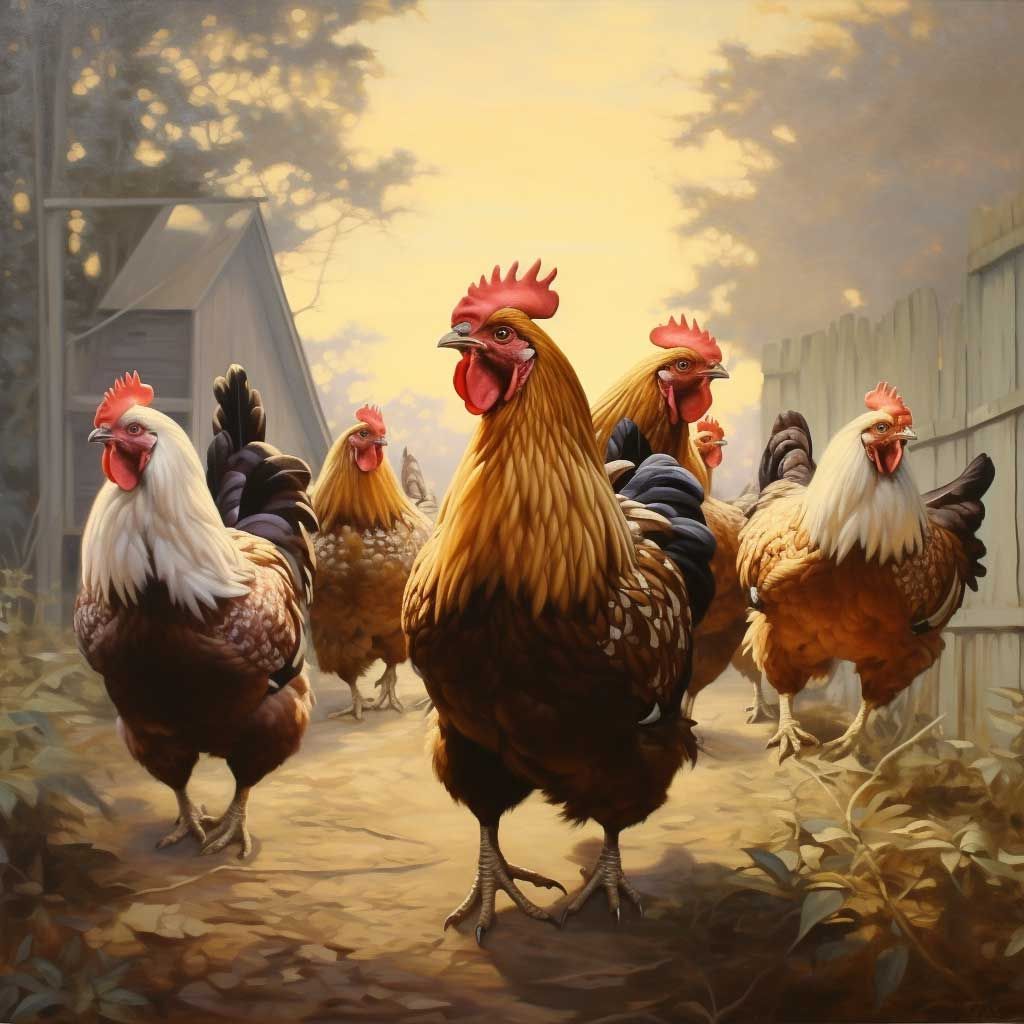
The Ultimate Backyard Chicken Resource List: Books, Websites, and Communities for Raising Poultry
The journey of raising backyard chickens is both rewarding and challenging. Fortunately, a myriad of resources is available to guide, support, and inspire you along the way. Whether you’re a newbie or a seasoned chicken keeper, our comprehensive list of resources – from books and websites to active communities – will be an invaluable asset on your poultry adventure.
Picture a bookshelf filled with chicken-related books, a computer displaying a chicken forum, and a community meeting about poultry. Fortunately for the backyard chicken breeding family, there are a huge array of helpful resources.
Books: The Foundation of Knowledge
- “The Chicken Chick’s Guide to Backyard Chickens” by Kathy Shea Mormino: A straightforward, down-to-earth approach to backyard chicken keeping that covers essential topics like feed, coop designs, and chicken health.
- “Storey’s Guide to Raising Chickens” by Gail Damerow: This comprehensive guide provides expert advice on breed selection, housing, feeding, behavior, and health care, making it a must-have for both beginners and veterans.
- “The Backyard Chicken Bible: The Complete Guide to Raising Chickens” by Eric Lofgren: Dive deep into the world of chickens with this detailed manual that offers guidance on every stage, from hatching to laying.
- “Fresh Eggs Daily: Raising Happy, Healthy Chickens…Naturally” by Lisa Steele: A holistic approach to chicken care, focusing on natural remedies and practices.
Websites: A Digital Trove of Information
- BackYardChickens.com: A comprehensive website catering to all levels of poultry enthusiasts. It boasts articles, forums, reviews, and a massive gallery of coops.
- The Chicken Chick (www.the-chicken-chick.com): An extension of Kathy Shea Mormino’s book, offering a wide array of articles, tips, and DIY projects for the chicken enthusiast.
- Poultry Keeper (www.poultrykeeper.com): This site provides a range of articles on care, breeds, diseases, and even a calculator for determining the space you’ll need for your flock.
- Fresh Eggs Daily (www.fresheggsdaily.blog): A blog that focuses on natural chicken keeping with a plethora of tips and tricks for a healthy flock.
Communities: Find Your Flock
- BackYard Chickens Forum: An extension of their website, this forum is an incredible resource for chicken keepers. With various threads on care, breeds, and troubleshooting, you’re bound to find answers and camaraderie.
- Chicken Reddit (r/BackYardChickens): Reddit’s very own chicken community is filled with advice, stories, and beautiful pictures of members’ flocks.
- Local Poultry and Chicken Keeping Groups: Don’t underestimate the value of local clubs or groups. They often organize meetups, workshops, and swaps. Check social platforms like Facebook or Meetup for groups in your vicinity.
- Poultry Shows and Fairs: These events not only showcase a variety of poultry breeds but also serve as a gathering spot for enthusiasts. Engage with breeders, attend workshops, and immerse yourself in the chicken community.
- Online Poultry Webinars and Workshops: With the growth of digital platforms, many experts host online sessions, diving deep into specific poultry topics. Keep an eye on platforms like Zoom or Eventbrite for upcoming events.
Conclusion to Backyard Chicken Resources
Raising backyard chickens can be a fulfilling venture, but like any other undertaking, challenges will arise. By leveraging the vast resources available, from insightful books to supportive communities, you can ensure your poultry experience is both enjoyable and successful. Whether you’re troubleshooting an issue, exploring advanced topics, or merely sharing your chicken joys, remember: knowledge is just a page or click away!
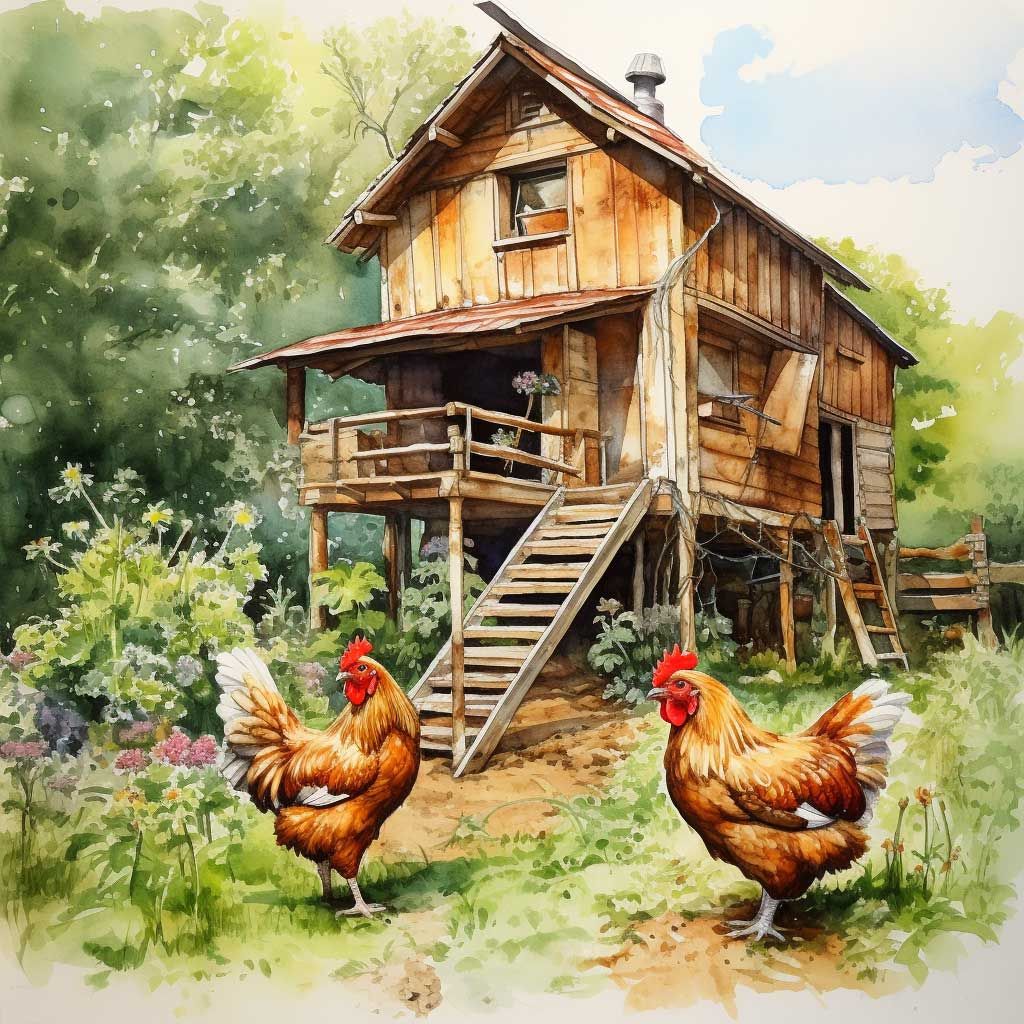
The Essential Supplies List for Raising Backyard Chickens: From Equipment to Feed and Health
Raising backyard chickens is an exciting endeavor, whether you’re doing it for fresh eggs, meat, or both. Yet, like all ventures, proper preparation is key. This comprehensive guide will walk you through essential supplies needed to ensure your chickens are happy, healthy, and productive.
Imagine a picturesque backyard setup showcasing a coop, feeders, waterers, nesting boxes, and a few chickens pecking away. The backyard chicken enthusiast loves almost every part of raising backyard chickens for having their own free range eggs.
Equipment: Building a Comfortable Home
- Chicken Coop: This is the primary shelter for your chickens.
– Ensure it’s predator-proof, ventilated, and has ample space for the number of birds you plan to keep.
– Consider coops with elevated designs to prevent dampness and offer protection.
- Nesting Boxes: Essential for egg-laying hens.
– One box for every 3-4 hens is recommended.
– Make them cozy with straw or wood shavings.
- Roosting Bars: Chickens like to sleep off the ground.
– Ensure they’re wide enough (2-3 inches) for comfortable perching.
– Position them higher than the nesting boxes.
- Feeders and Waterers: Essential for daily nourishment.
– Consider hanging feeders to deter pests.
– Ensure waterers are cleaned regularly.
- Chicken Run: An enclosed outdoor space.
– Allows the chickens to forage, exercise, and access sunlight.
– Ensure it’s secure to keep predators out.
Picture a collection of various chicken feeds – layers pellets, crumble, scratch grains, and a bowl of fresh water. For the background chicken breeder, there is a large collection of equipment, food, and supplements that can be used.
Feed: Nourishing Your Flock
- Starter Crumble: For chicks up to 6-8 weeks old.
– High in protein (about 18-20%) to support rapid growth.
- Grower Feed: For pullets from 8 weeks until they start laying.
– Slightly lower protein content (around 16-18%).
- Layer Feed: For egg-laying hens.
– Contains essential minerals, especially calcium, to support egg production.
– Typically offered in pellet or crumble form.
- Broiler or Meat Bird Feed: For chickens raised for meat.
– High in protein (20-24%) to promote quick and healthy growth.
- Grit: Essential for digestion.
– Helps chickens grind down grains in their gizzard.
- Scratch Grains: A treat, not a primary feed.
– Typically a mix of corn, oats, and barley.
– Use sparingly, especially in cold weather for energy.
Maybe you’ve never considered before needing a first aid kit tailored for chickens, showcasing items like vet wrap, tweezers, and ointments. First aid is an important part of raising backyard chickens.
Health Supplies: Keeping Your Flock Flourishing
- First Aid Kit: Tailored for poultry.
– Include items like vet wrap, tweezers, wound disinfectant, and electrolyte mix.
- Diatomaceous Earth (Food Grade): For external parasites.
– Sprinkle in dust bathing areas and nesting boxes.
- Lice and Mite Sprays: To keep external parasites at bay.
- Wormers: Consult a vet and worm chickens as needed.
- Vitamin and Electrolyte Supplements: Boosts overall health.
– Especially beneficial during stress or molting periods.
- Calcium Supplements: For strong eggshells.
– Offered as crushed oyster shells or eggshells.
- Apple Cider Vinegar: A natural health tonic.
– Add a splash to their water for gut health.
Conclusion to Supply List for Backyard Chickens
Having the right supplies on hand is a game-changer when raising backyard chickens. This comprehensive list ensures you’re well-prepared to provide your flock with a safe environment, proper nutrition, and the necessary healthcare. As you embark on this poultry journey, remember that the initial setup might require an investment, but the returns – in fresh eggs, meat, and the joy of chicken keeping – are priceless.

A Comprehensive Guide to the Top 25 Popular Chicken Breeds
Whether you’re venturing into poultry-keeping for the first time or expanding your existing flock, understanding different chicken breeds can help in making informed decisions. Here’s a directory profiling 25 of the most popular chicken breeds, shedding light on their temperaments, primary purposes, and distinctive features.
Imagine a colorful collage featuring diverse chicken breeds, showcasing their distinct patterns, sizes, and shapes. There are a wide variety of chicken breeds to choose from for the backyard chicken breeder.
-
Rhode Island Red
– *Primary Purpose*: Egg laying
– *Temperament*: Friendly and easygoing
– *Description*: Deep red feathers; known for its consistent egg-laying abilities.
-
Sussex
– *Primary Purpose*: Dual-purpose (meat & eggs)
– *Temperament*: Calm and docile
– *Description*: Comes in various colors; robust and versatile.
-
Leghorn
– *Primary Purpose*: Egg laying
– *Temperament*: Active and independent
– *Description*: White is the most common color; a prolific egg layer.
-
Plymouth Rock (Barred Rock)
– *Primary Purpose*: Dual-purpose
– *Temperament*: Friendly and calm
– *Description*: Black and white striped feathers; a reliable egg producer.
-
Orpington (aka Buff Orpington)
– *Primary Purpose*: Dual-purpose
– *Temperament*: Gentle and affectionate
– *Description*: Fluffy and comes in various colors; a favorite for families.
-
Wyandotte
– *Primary Purpose*: Dual-purpose
– *Temperament*: Generally docile
– *Description*: Rounded and has a laced feather pattern; versatile in various climates.
-
Australorp
– *Primary Purpose*: Egg laying
– *Temperament*: Friendly and easygoing
– *Description*: Glossy black feathers; holds record for most eggs laid in a year.
-
Maran
– *Primary Purpose*: Egg laying
– *Temperament*: Calm and quiet
– *Description*: Known for its dark chocolate-colored eggs.
-
Silkie
– *Primary Purpose*: Ornamental
– *Temperament*: Gentle and sweet
– *Description*: Fluffy, soft feathers and black skin; often kept as pets.
-
Cochin
– *Primary Purpose*: Ornamental
– *Temperament*: Docile
– *Description*: Massive, feather-footed birds available in various colors.
-
Brahma
– *Primary Purpose*: Meat
– *Temperament*: Calm and gentle
– *Description*: Large bird with feathered feet; known as the “King of Chickens.”
-
Welsummer
– *Primary Purpose*: Egg laying
– *Temperament*: Friendly
– *Description*: Produces terracotta-colored eggs with speckles.
-
Polish
– *Primary Purpose*: Ornamental
– *Temperament*: Active
– *Description*: Has a striking crest of feathers atop its head.
-
Hamburg
– *Primary Purpose*: Egg laying
– *Temperament*: Energetic
– *Description*: Small-sized with speckled plumage; known as the “Living Dutchman.”
-
Ameraucana
– *Primary Purpose*: Egg laying
– *Temperament*: Calm
– *Description*: Produces unique blue-colored eggs.
-
Frizzle
– *Primary Purpose*: Ornamental
– *Temperament*: Calm and gentle
– *Description*: Curled or frizzled feathers give it a unique appearance.
-
Campine
– *Primary Purpose*: Egg laying
– *Temperament*: Active
– *Description*: Slim bird with a distinct silver or golden color pattern.
-
Fayoumi
– *Primary Purpose*: Egg laying
– *Temperament*: Very active
– *Description*: Egyptian origin; black and white speckled.
-
Langshan
– *Primary Purpose*: Meat
– *Temperament*: Docile
– *Description*: Tall, black bird known for its meat quality.
-
Houdan
– *Primary Purpose*: Egg laying
– *Temperament*: Quiet
– *Description*: French breed, often with a crest; known for its five toes.
-
Dorking
– *Primary Purpose*: Meat
– *Temperament*: Gentle
– *Description*: Ancient breed known for its meat; also has five toes.
-
Jersey Giant
– *Primary Purpose*: Meat
– *Temperament*: Calm
– *Description*: As the name suggests, it’s one of the largest chicken breeds.
-
Catalana
– *Primary Purpose*: Egg laying
– *Temperament*: Active
– *Description*: Spanish breed, golden-yellow plumage.
-
Lakenvelder
– *Primary Purpose*: Egg laying
– *Temperament*: Active
– *Description*: Dutch breed with striking black and white contrast.
-
Buckeye
– *Primary Purpose*: Dual-purpose
– *Temperament*: Friendly
– *Description*: Mahogany-colored bird suitable for cold climates.
Conclusion of Top 25 Most Popular Chicken Breeds
Understanding breed characteristics can significantly enhance your poultry-keeping experience. Whether you prioritize egg production, meat quality, ornamental appeal, or friendly companionship, there’s a breed tailored to your needs. This guide serves as a steppingstone into the fascinating world of chicken breeds, ensuring you find the perfect feathered friends for your backyard.
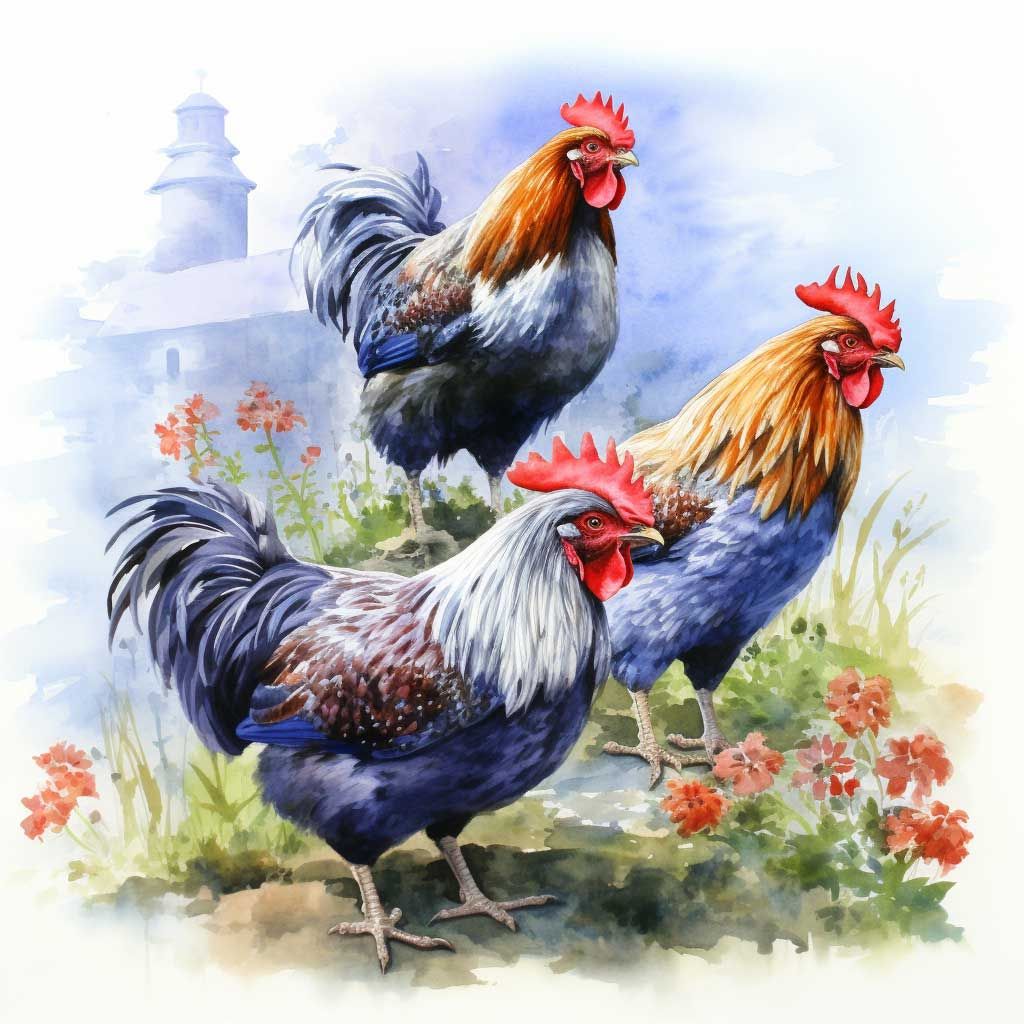
Top 5 FAQ for Raising Backyard Chickens and Getting Free Range Eggs:
Is it hard to raise backyard chickens?
With the right resources and commitment, even beginners can succeed in raising chickens. It’s about understanding their basic needs and maintaining consistency.
How much space do I need for my chickens?
Typically, each chicken requires about 2-3 square feet inside the coop and 8-10 square feet in an outside run. However, more space is always better!
Can I raise chickens even if I live in the city?
Yes, many cities allow residents to keep chickens, but always check your local regulations and by-laws first.
How often will my hens lay eggs?
Depending on the breed, a healthy hen can lay an egg almost every day. However, factors like age, daylight, diet, and stress can affect their laying pattern.
Are chickens noisy? Will they disturb my neighbors?
Hens are relatively quiet compared to roosters. It’s the crowing of roosters that most people associate with noise. If noise is a concern, consider keeping a flock of only hens.
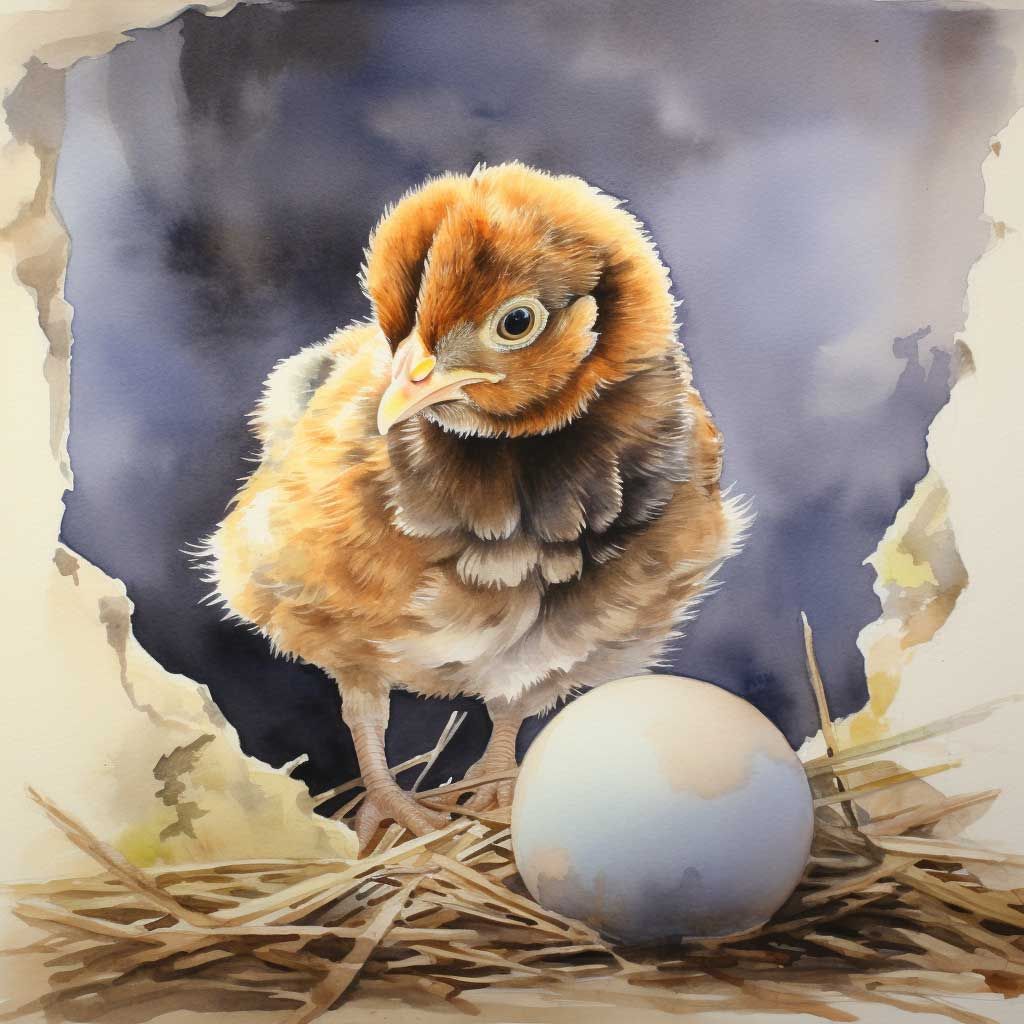
10 Reasons Why Raising Chickens is Beneficial for Families
The trend of families keeping chickens has seen an uptick over the recent past, and it’s not hard to understand why. These delightful animals are more than just egg-producers; they integrate seamlessly into the family unit, offering both tangible and intangible benefits. Let’s delve into ten reasons that demonstrate why raising chickens is fantastic for families.
- Endearing Pets with Personality: While the image of a hostile rooster might come to mind, the reality is quite different. Many chicken breeds, such as the Plymouth Barred Rocks, Speckled Sussex, and Silkies, are known for their friendly demeanor. These feathered friends often enjoy being cuddled and can be quite affectionate. Just like cats or dogs, each chicken has its own unique personality, making them delightful companions.
- A Source of Daily Entertainment: One can’t help but chuckle watching chickens perform their daily antics. From their comical run to the amusing squabble over who gets the preferred nesting box, these birds offer boundless entertainment right in your backyard.
- Natural Pest Control: Chickens, especially those that free-range, are voracious bug eaters. This means fewer pests in your yard. An added advantage is their affinity for ticks, reducing the risk of tick-related illnesses in wooded areas.
- Instilling Responsibility in Kids: Entrusting children with tasks like feeding, watering, and egg collection can instill a sense of duty. These simple yet vital tasks allow children to comprehend the importance of care and its direct consequences, such as the reward of fresh eggs.
- Easy to Maintain: Contrary to popular belief, maintaining a flock doesn’t demand excessive time or resources. The primary effort lies in establishing a suitable coop. However, with some creativity and perhaps some DIY, this can be achieved without breaking the bank.
- Fresh Eggs Daily: This is a no-brainer. Freshly laid eggs taste remarkably better than store-bought ones. Additionally, when chickens are fed high-quality feed like Purina® Organic Poultry Feed, the eggs are not only tastier but also more nutritious.
- Environmental Education: Raising chickens provides an excellent opportunity for children to learn about life cycles, food sources, and sustainability. Witnessing the hatching of chicks or understanding where their breakfast comes from can be an enriching educational experience.
- Reduction in Food Waste: Chickens love kitchen scraps! From fruit peels to leftover veggies, they can help recycle food waste, converting it into eggs and reducing the amount of waste going to landfills.
- Natural Gardeners: Chickens are adept at turning the soil in search of bugs. This natural tilling can help aerate the soil, making your garden healthier. Plus, their droppings serve as an excellent organic fertilizer.
- Community Building: Keeping chickens can be a conversation starter with neighbors, leading to shared tips, egg exchanges, or even communal chicken-raising projects. It’s a wonderful way to foster community ties.
In summary, chickens are more than just poultry. They are pets, entertainers, helpers, and educators. With the myriad of benefits they bring, it’s clear that they are a splendid addition to any family looking for a unique, rewarding experience.
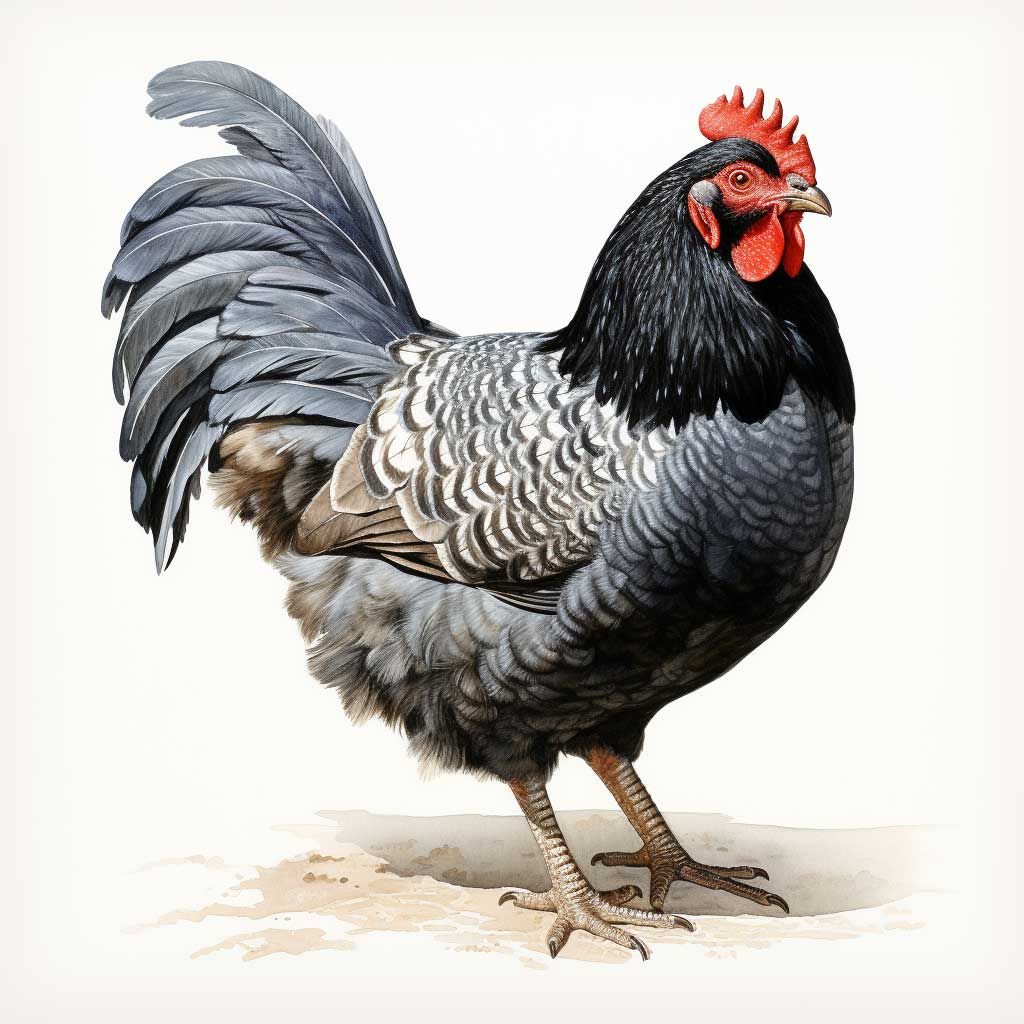
Distinguishing Hens from Roosters: Key Differences
Identifying whether a chicken is a hen or a rooster can sometimes be straightforward, especially when an adult rooster crows. However, determining the gender of younger chickens can be more challenging.
Understanding Chicken Terminology
- Roosters and Hens: A rooster refers to a male chicken, while a hen is a female. Notably, all roosters are chickens, but not all chickens are roosters. When people say “chicken,” they often mean a hen.
- Cockerels and Pullets: A male chicken below one year is a cockerel, and post that, he becomes a rooster. Similarly, a female chicken below one year is a pullet and turns into a hen after.
Methods to Determine Chicken Gender
- Vent Sexing: A prevalent technique is “vent sexing.” This method, if done incorrectly, can harm a chick. Accuracy is close to 50%, and experts recommend leaving it to professionals at hatcheries. Even with professionals, there’s a 10% margin of error.
- Straight Run Chicks: Local breeders might sell “straight run” chicks, meaning their gender isn’t identified. Typically, the gender ratio is evenly split.
Identifying Features Between Hens and Roosters
For chickens between 3-6 months, certain physical characteristics can hint at their gender:
- Combs and Wattles: A rooster’s comb (the crest on their head) and wattles (skin hanging under their beak) are usually more prominent and brighter in color than a hen’s.
- Feather Differences: Hens have rounded, short neck or hackle feathers, while roosters have longer, pointed ones. Only male chickens have saddle feathers on their backs. Moreover, roosters have more flamboyant tail feathers, often with varied colors.
- Behavioral Traits: Roosters are generally bolder. They often “challenge” each other by raising their hackle feathers, although hens can exhibit this behavior too.
- Posture: Cockerels usually stand taller with a more puffed-out chest compared to pullets.
- Leg Size: Roosters have thicker legs than hens.
- Spurs: Some cockerels develop spurs on their legs, a bony growth that can be dangerous, especially from aggressive roosters.
Frequently Asked Questions
- Do hens need to mate to lay eggs? Hens can lay eggs without mating, but such eggs aren’t fertilized and won’t hatch into chicks.
- Rooster vs. Cock: They’re synonymous. “Rooster” is common in the U.S., whereas “cock” is used in the U.K. and parts of the U.S.
- What is auto-sexing? Auto-sexing means identifying chick gender based on their down color and markings. Resulting from crossbreeding in the early 1900s in the UK, only some breeds like Cream Legbars and Barred Plymouth Rocks possess this trait.
- Sex link chickens: These are hybrid chickens where you can visually determine their gender. Notably, the next generation won’t inherit this trait.
In conclusion, while these indicators can provide clues, certainty about a chicken’s gender typically comes only when they start crowing or laying eggs. However, making predictions can be a fun exercise for chicken enthusiasts.
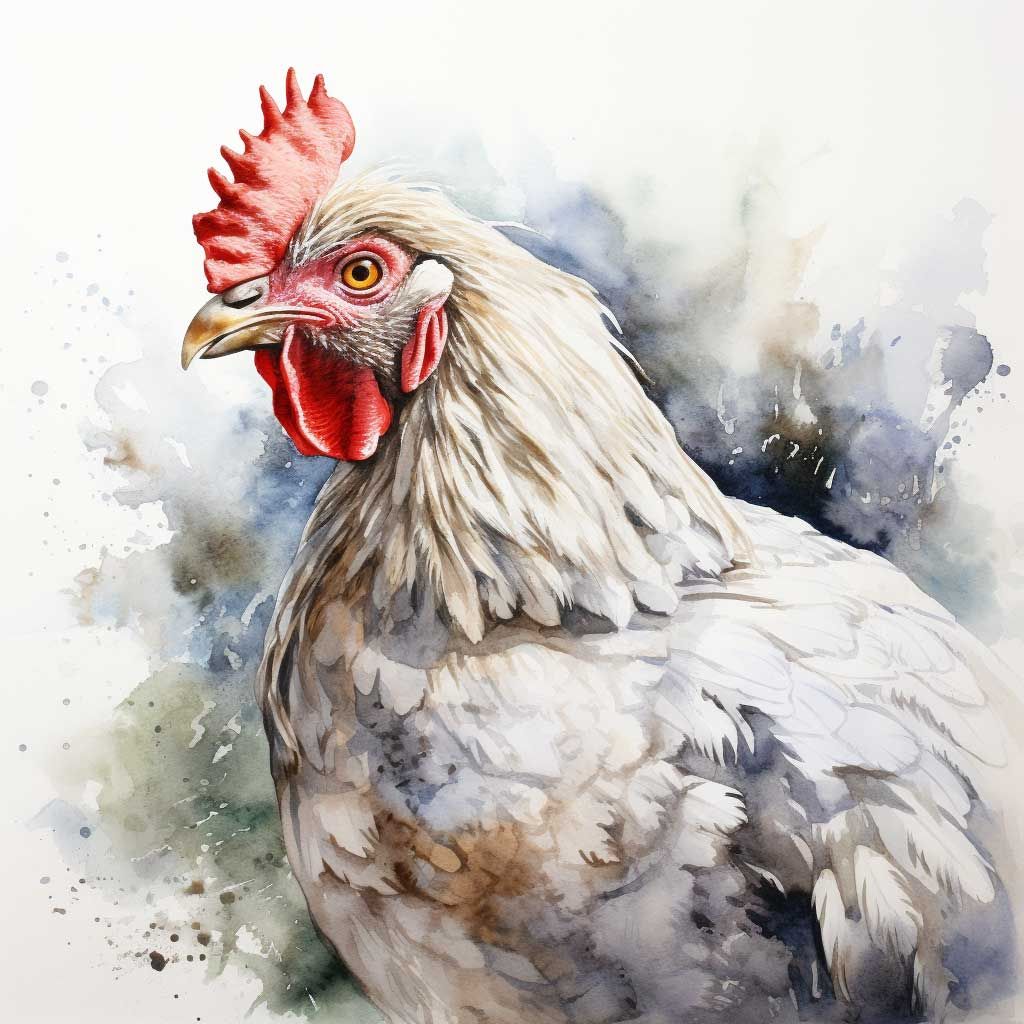
The Joys of Raising Backyard Chickens
Raising backyard chickens is an endeavor that goes beyond simply having a fresh supply of eggs. For many, it’s an immersion into a simpler way of life, a step toward sustainability, and a chance to connect with nature on a daily basis. Let’s delve into the multifaceted joys of keeping these feathered friends in our backyards.
1. Fresh Eggs Daily
Arguably the most immediate benefit of raising chickens is the bounty of fresh eggs. These eggs are often richer in taste and have bright yellow to orange yolks, indicative of a natural and varied diet. Freshly harvested eggs from well-cared-for hens are a culinary delight and can vastly improve any dish.
2. Natural Pest Control
Chickens are voracious insect eaters. From beetles to worms, they will scour the garden, ridding it of pests. This natural form of pest control means fewer insects damaging your garden and less reliance on chemical pesticides.
3. Sustainability and Reduced Waste
Chickens are great recyclers. Kitchen scraps that might otherwise be thrown away can be given to chickens as treats. They’ll devour leftover greens, fruits, and even grains, converting them into eggs. This cyclical process reduces waste and promotes a sustainable living model.
4. Education and Connection to Food
For families with children, chickens are a fantastic educational tool. Children learn responsibility by caring for animals. They also gain a deeper understanding of where their food comes from, fostering respect for livestock and an appreciation for organic, home-grown produce.
5. Chickens as Pets
Chickens have personalities. Anyone who’s spent time with them will attest to this. Some are bold and curious, while others might be shy and reserved. Their antics are a source of endless entertainment. Over time, many keepers form bonds with their chickens, petting them, and even giving them names. They become pets, not just livestock.
6. Therapeutic Benefits
The act of caring for chickens and watching them go about their daily routines can be incredibly therapeutic. The simple, repetitive tasks of feeding, cleaning, and collecting eggs can be meditative, providing a respite from the stresses of modern life. Many chicken keepers find solace in the coop, amid the gentle clucking and fluttering of wings.
7. Fertilizer for the Garden
Chickens produce more than just eggs; they also produce manure, which can be composted and used as a rich fertilizer for gardens. This helps in creating a closed-loop system where the waste from one entity becomes the nourishment for another, promoting sustainable gardening practices.
8. Community and Sharing
Raising chickens can be a community endeavor. Neighbors might stop by to admire your flock or inquire about starting their own. The act of sharing fresh eggs can foster goodwill and camaraderie. Moreover, online communities and local clubs centered around poultry-keeping provide a space for enthusiasts to share tips, tricks, and experiences.
9. Sense of Achievement
There’s an undeniable sense of achievement in raising chickens. From building a coop to nursing a sick hen back to health, these experiences instill a sense of pride and accomplishment. Every egg collected and every challenge overcome is a testament to the dedication and care provided by the keeper.
10. A Step Toward Self-Sufficiency
While we live in a world of supermarkets and instant gratification, there’s a growing movement towards self-sufficiency. Raising chickens is a step in that direction. It’s empowering to produce one’s own food and reduce reliance on commercial supply chains.
In conclusion, the joys of raising backyard chickens are manifold. It’s not just about eggs, but the experience as a whole – the connection to nature, the lessons learned, the bonds formed, and the myriad benefits that these wonderful birds bring into our lives. It’s a journey of discovery, challenges, and immense rewards.

